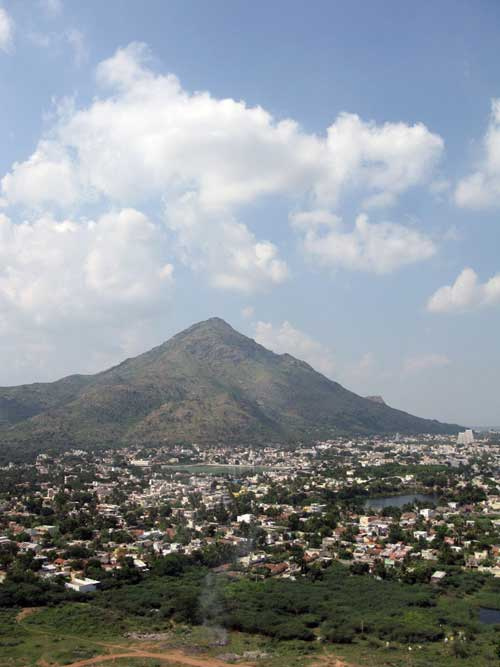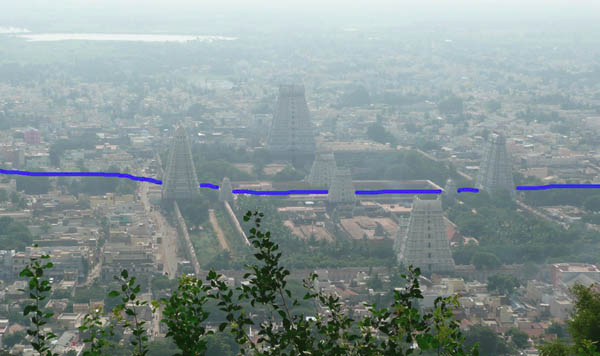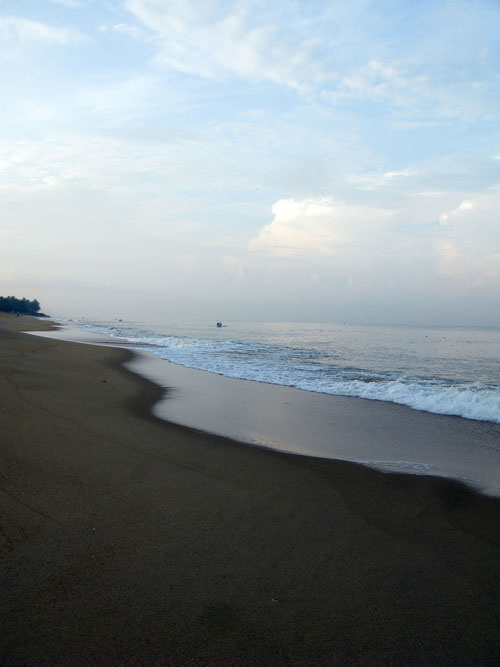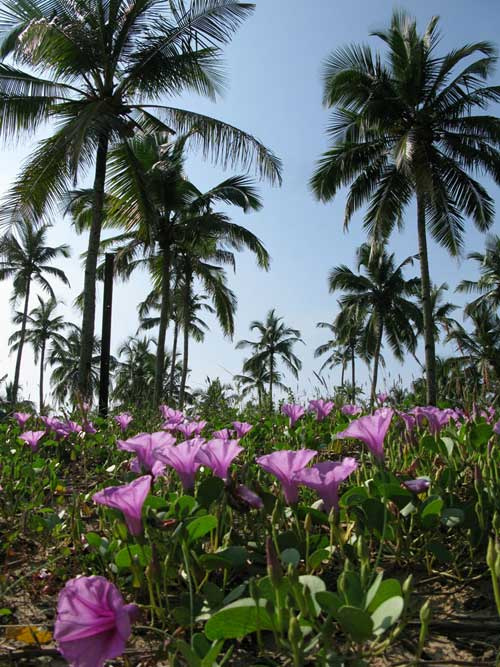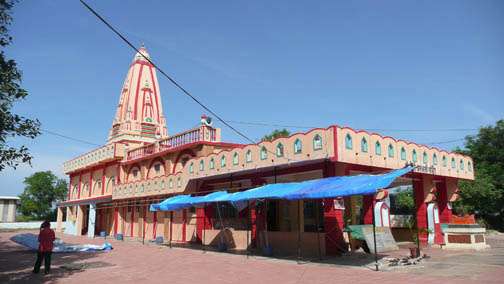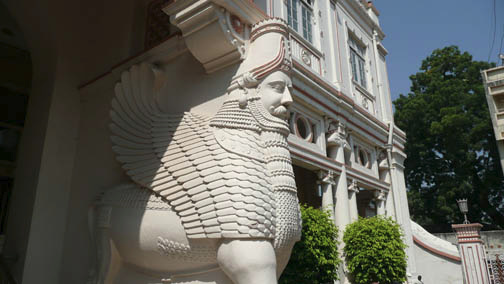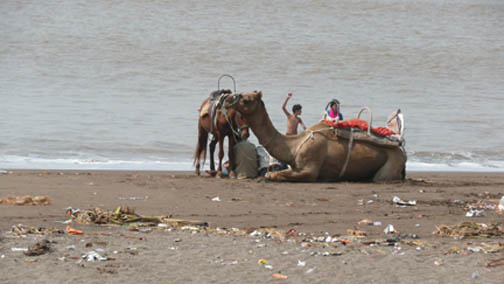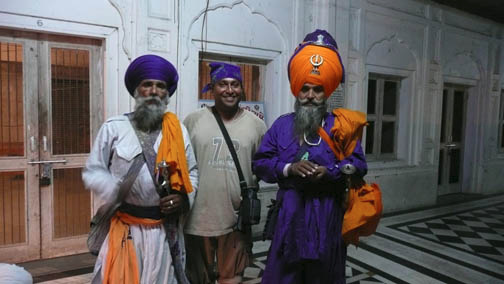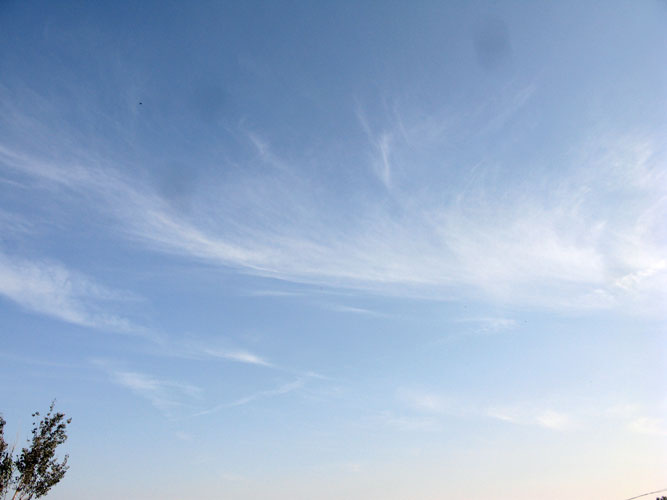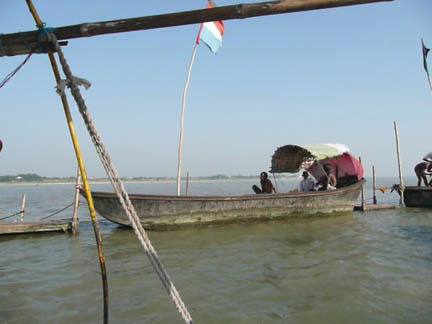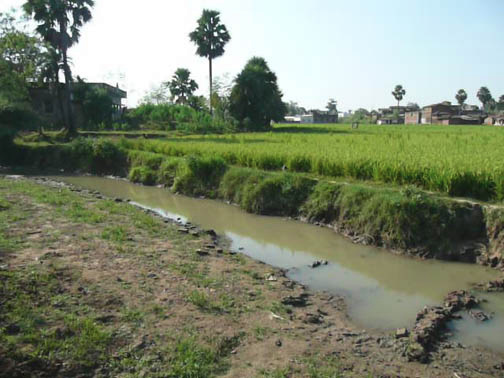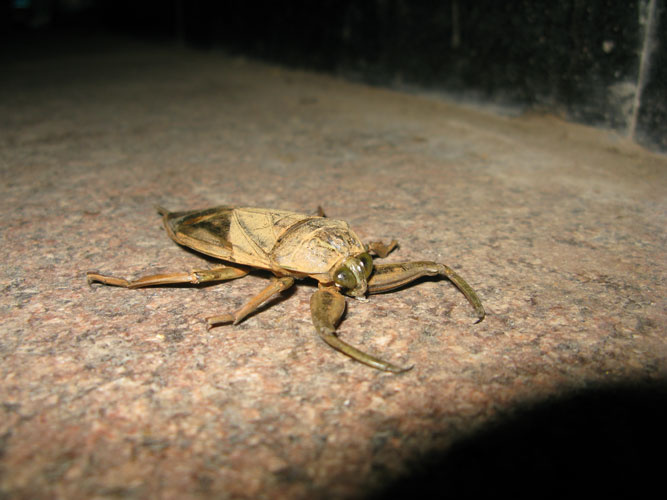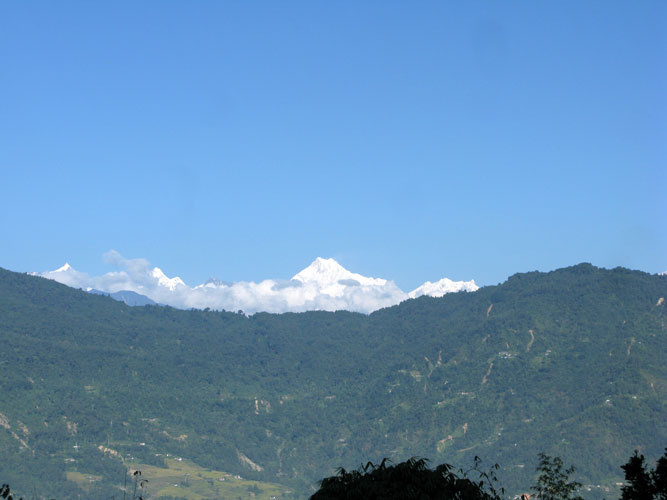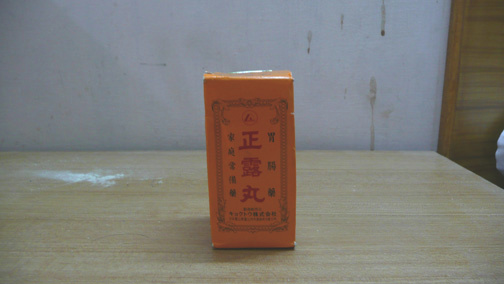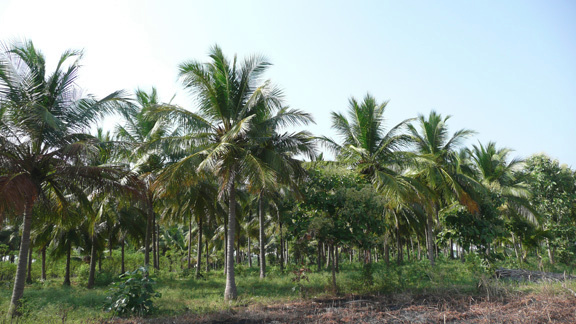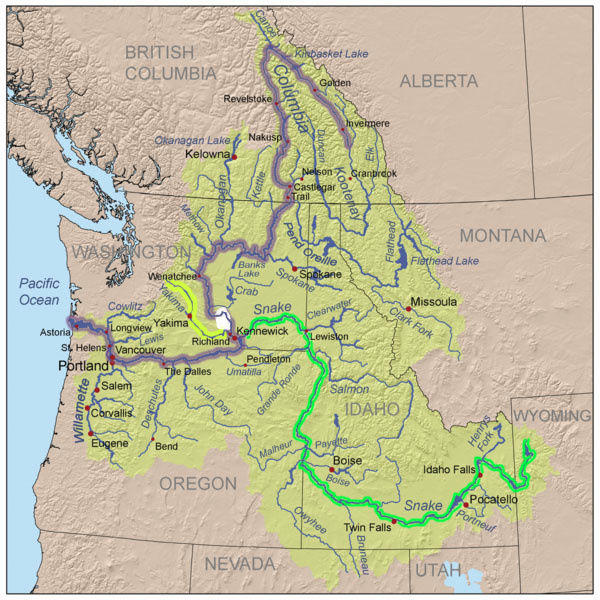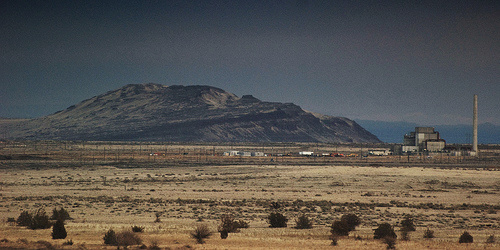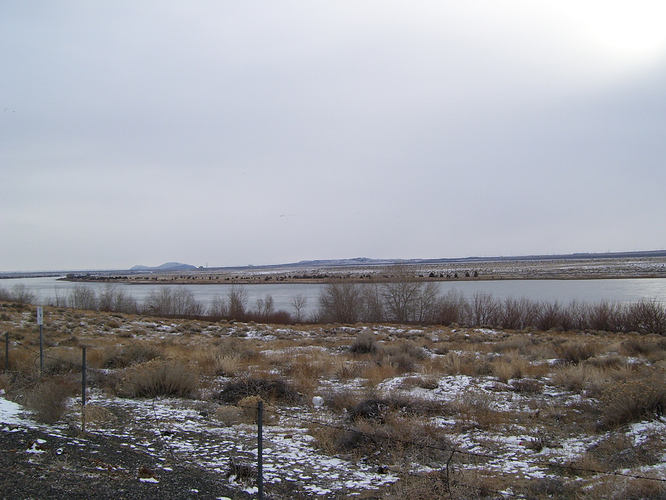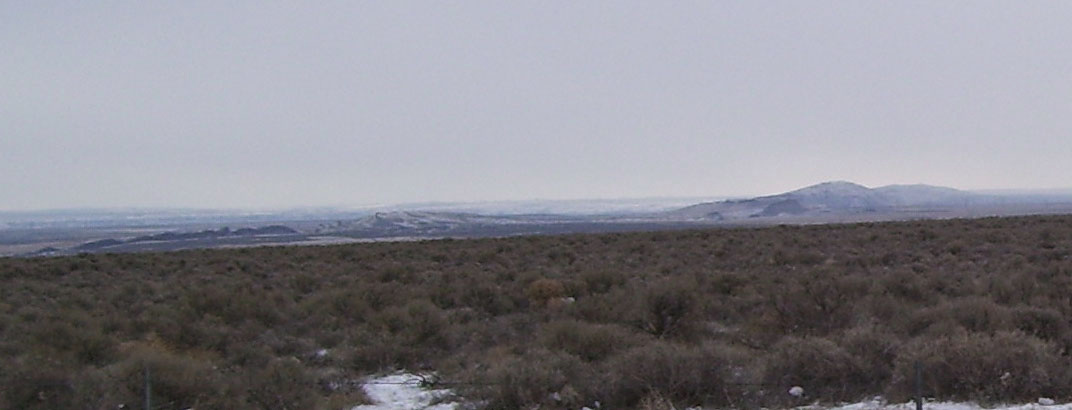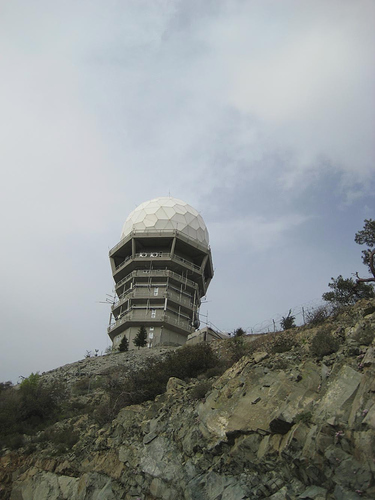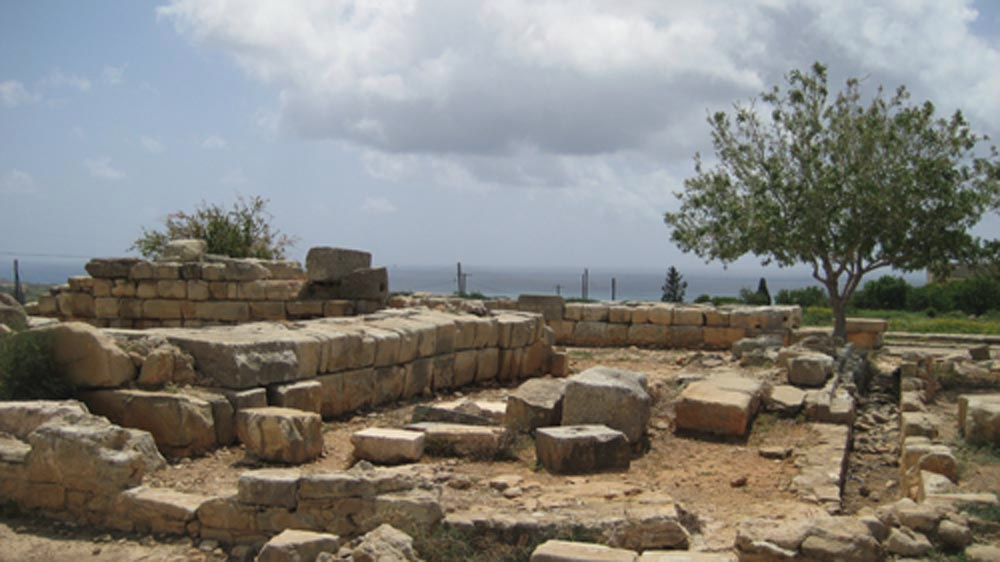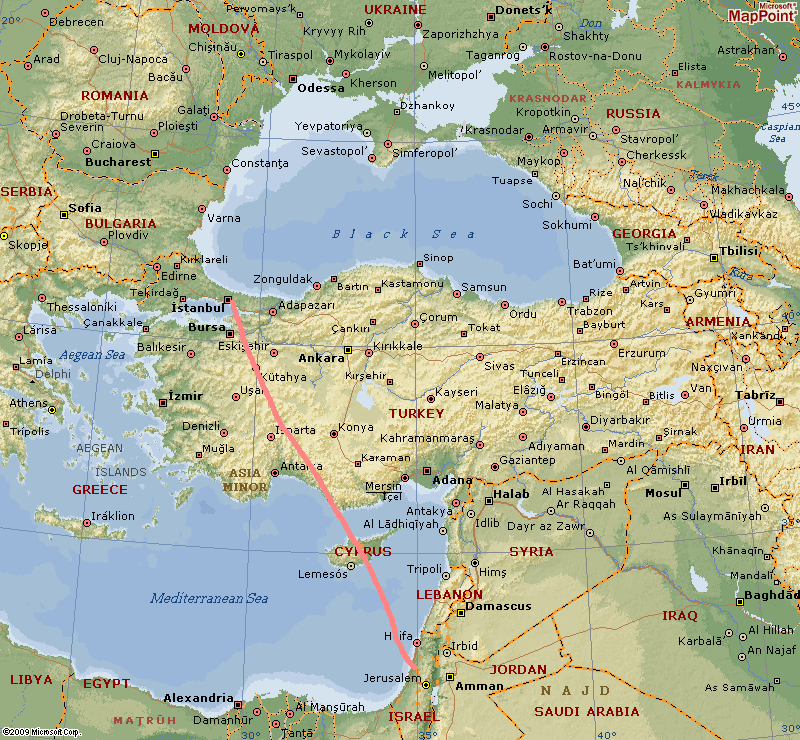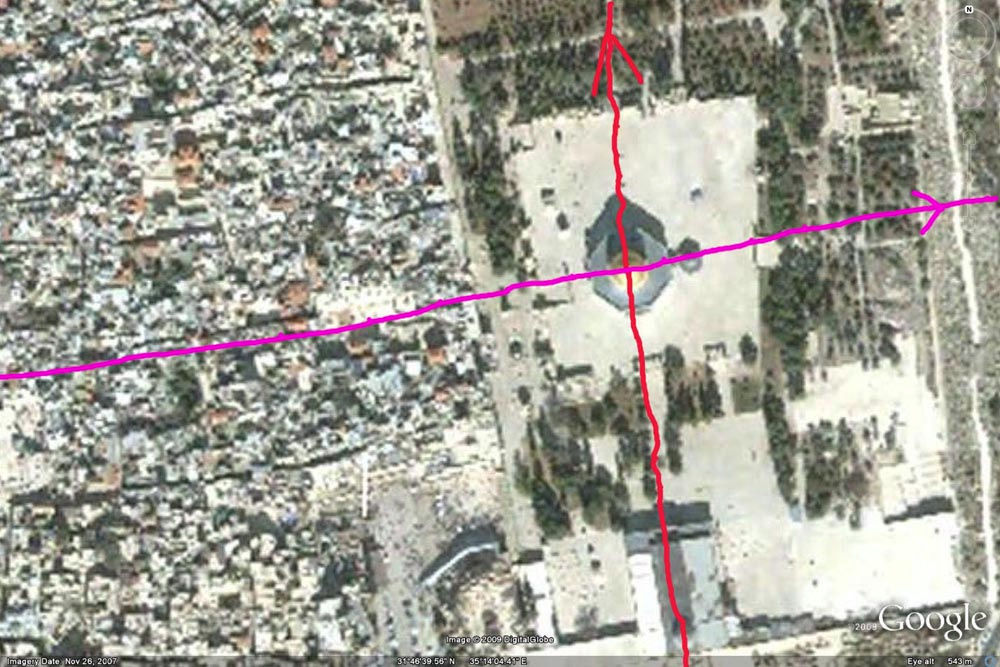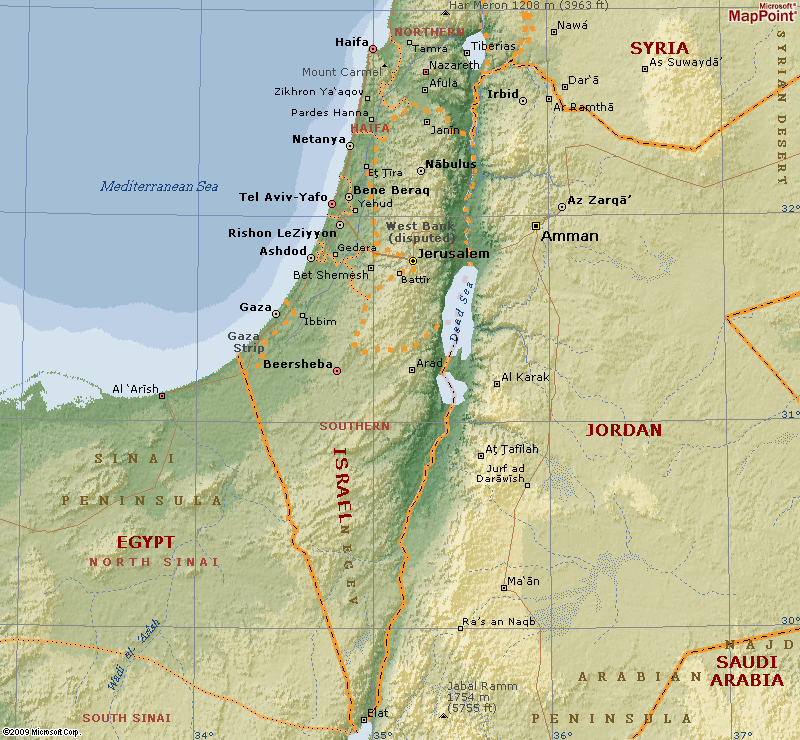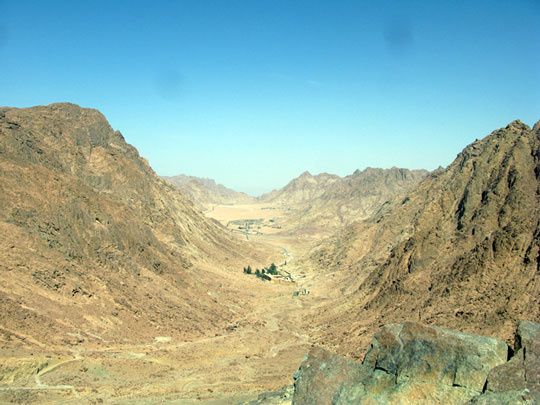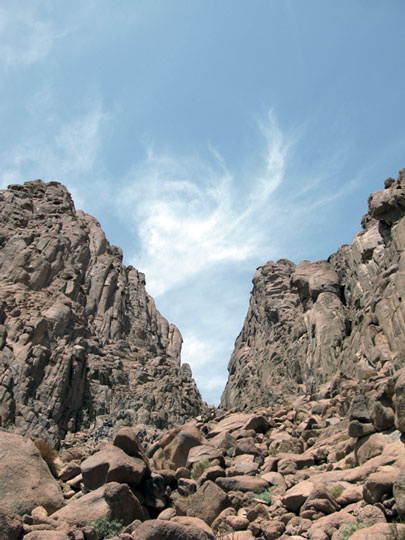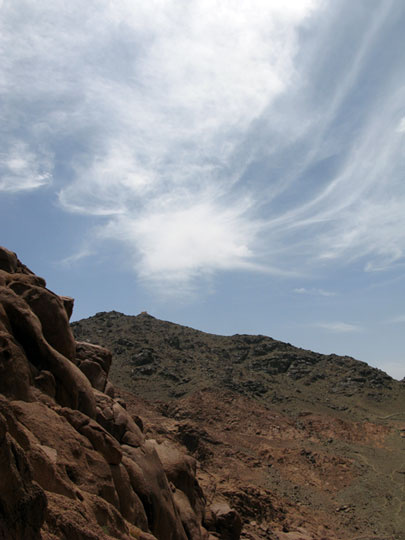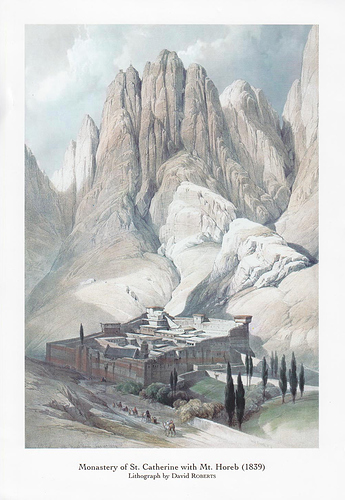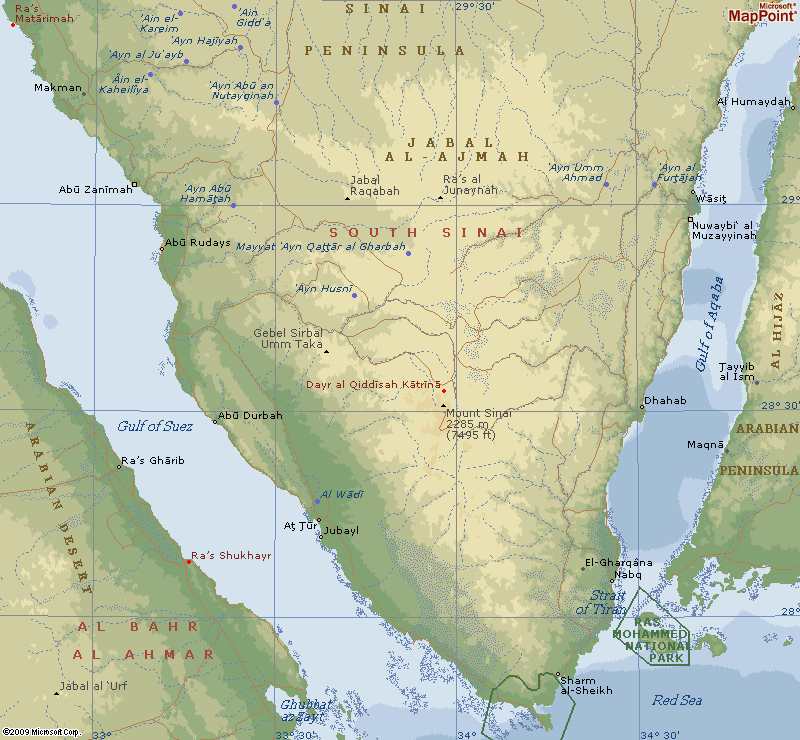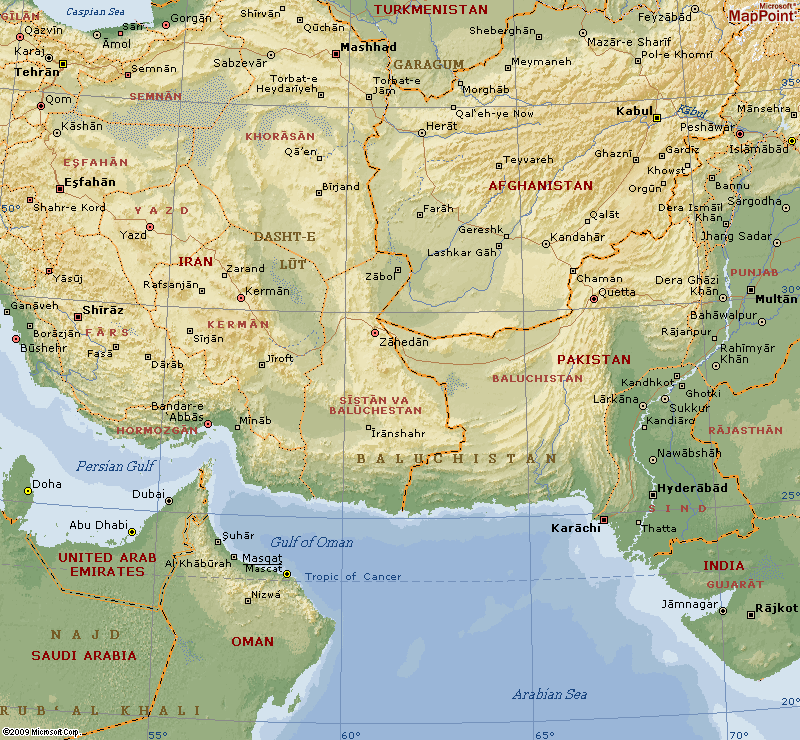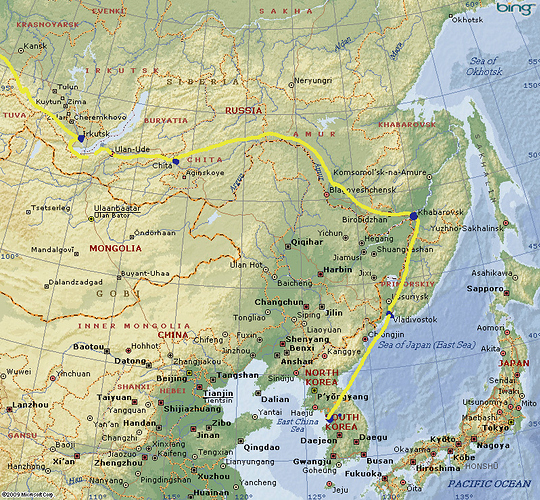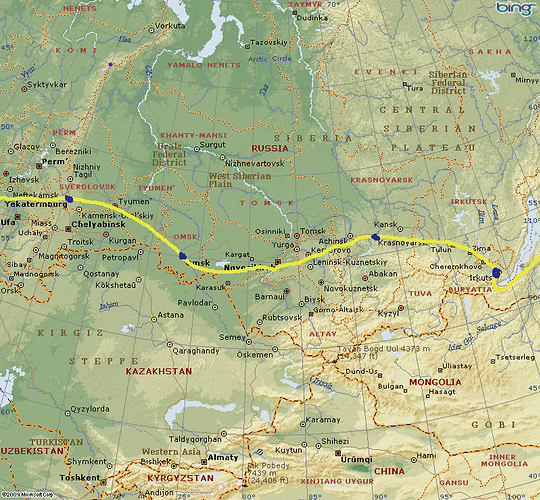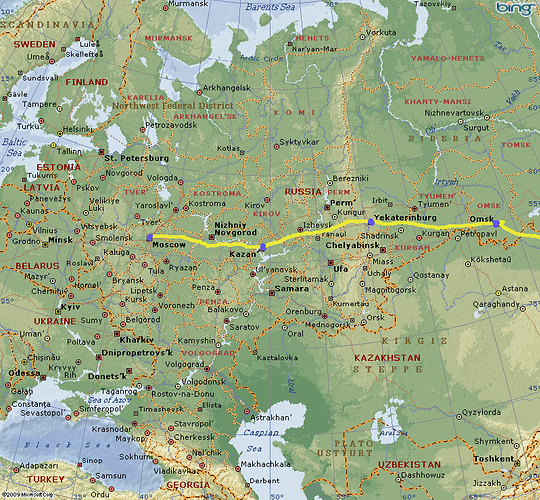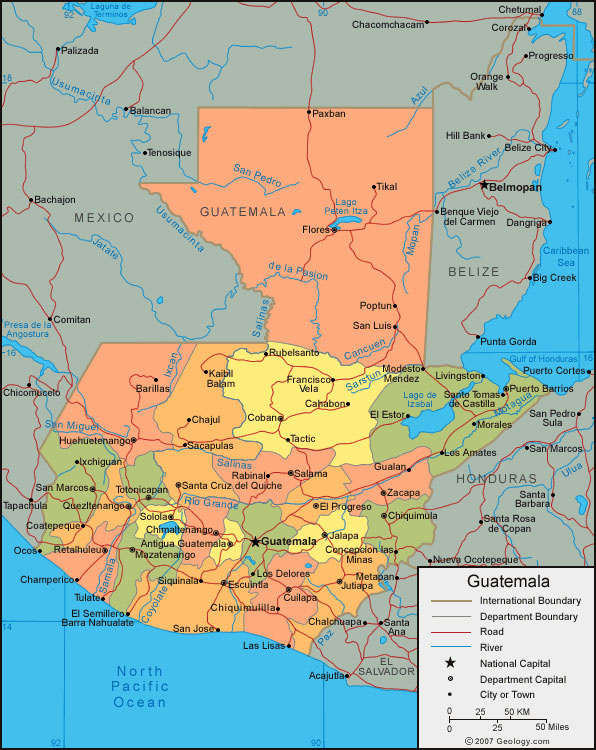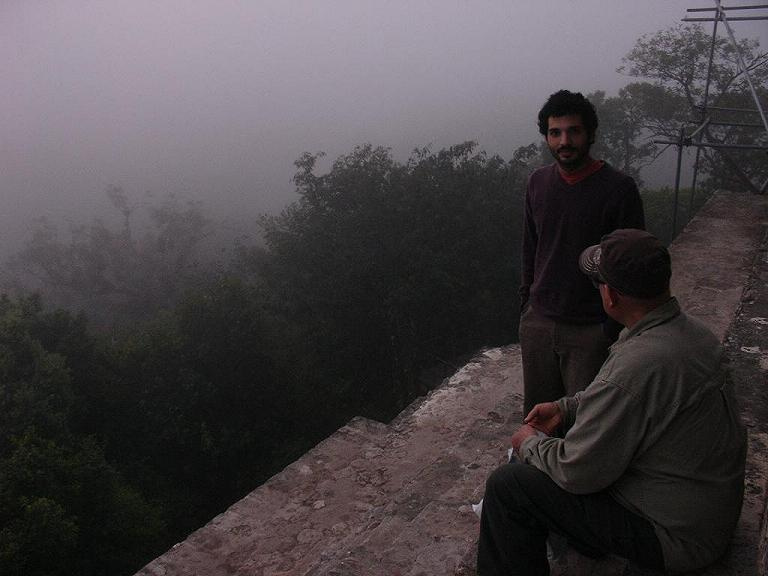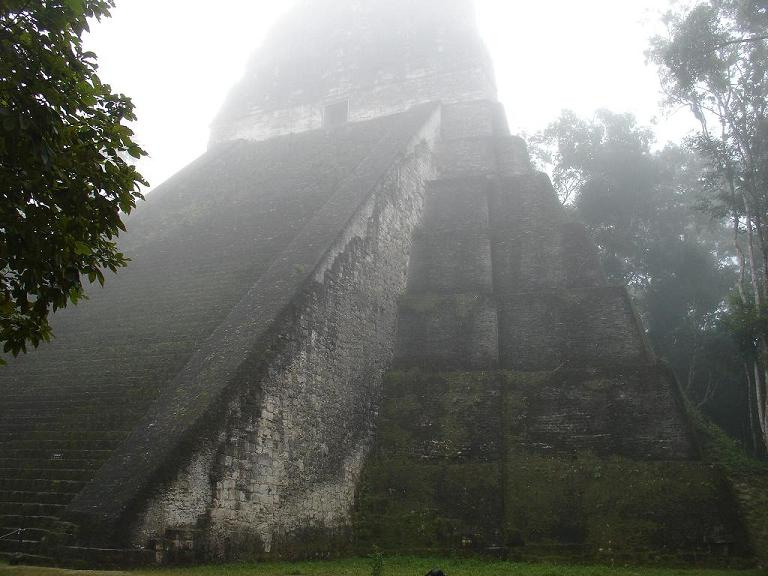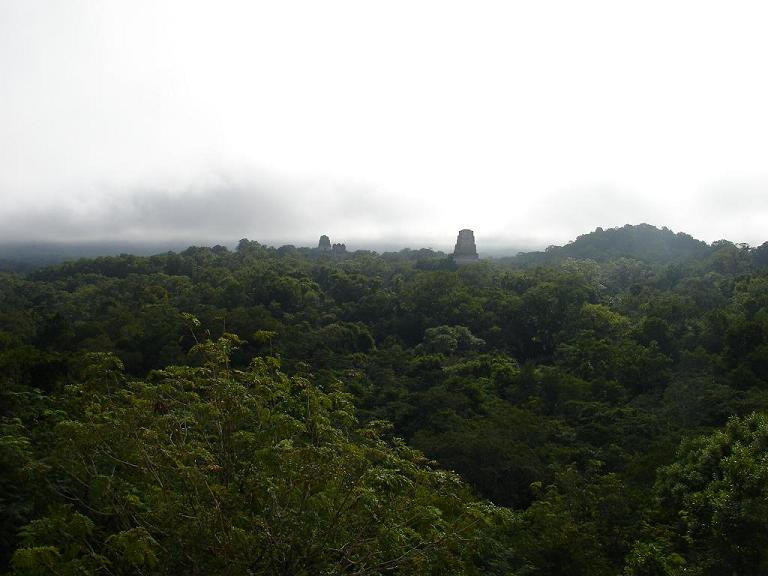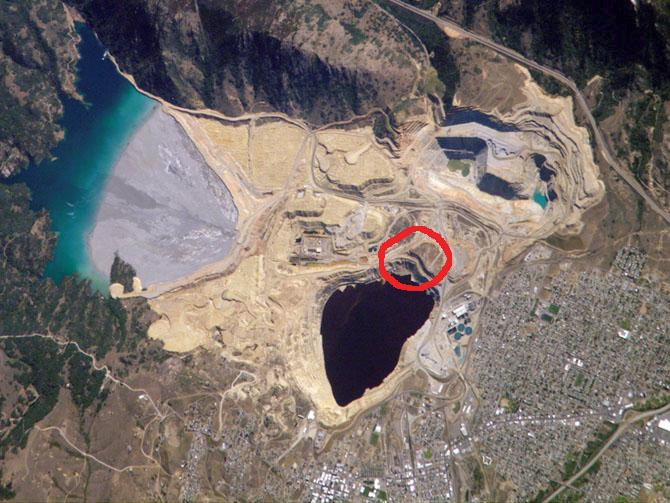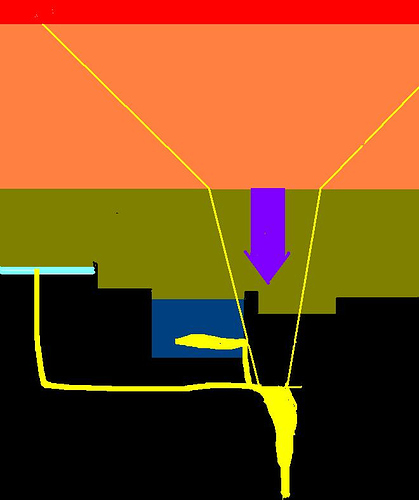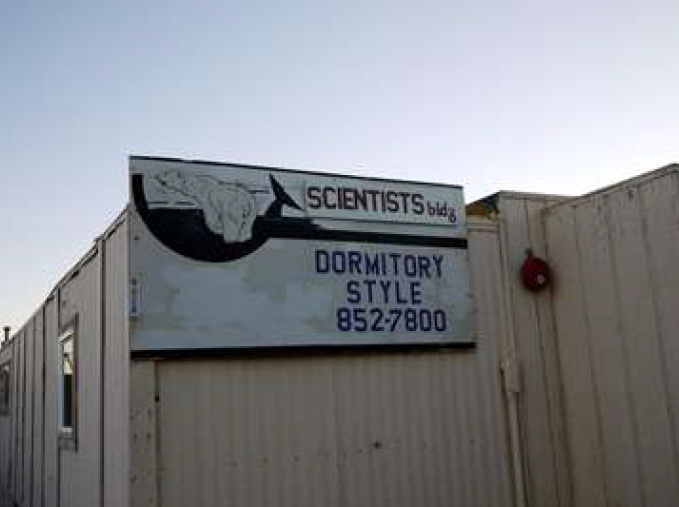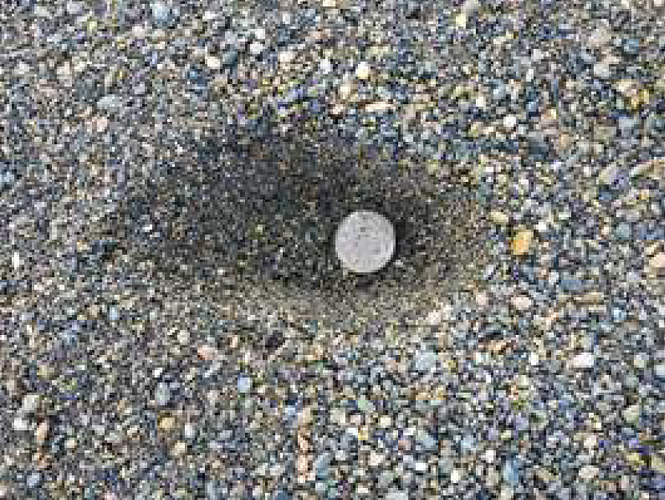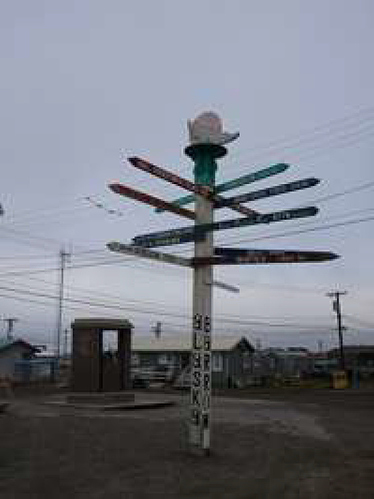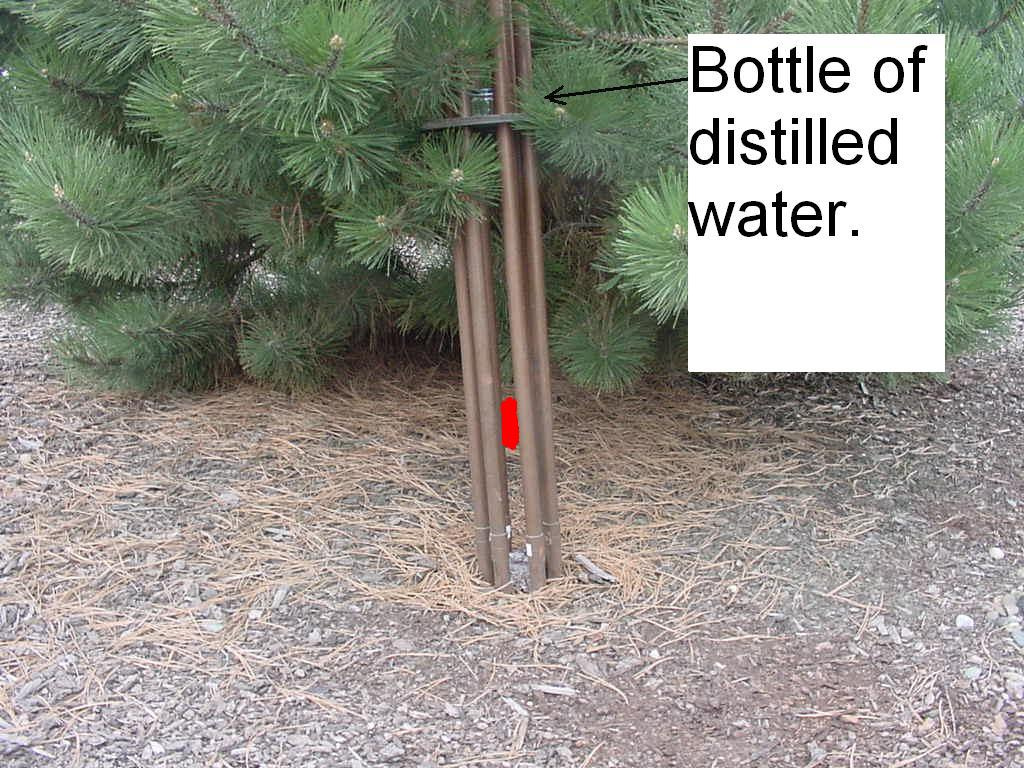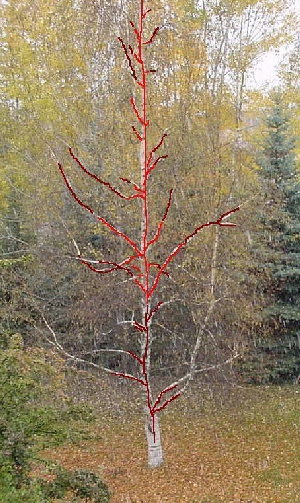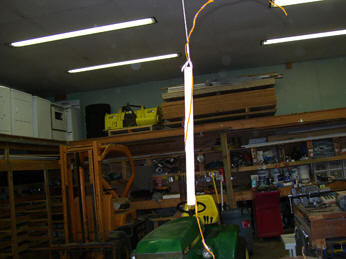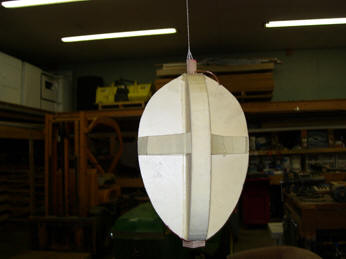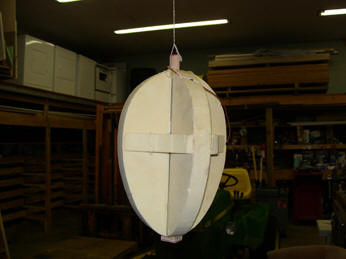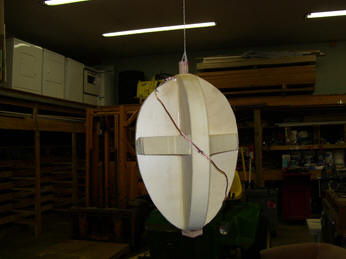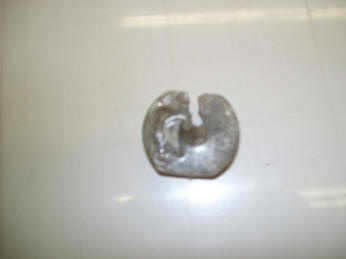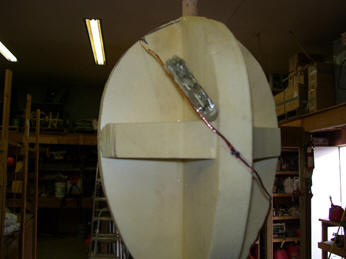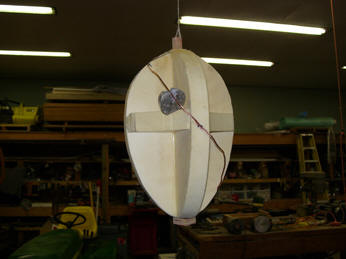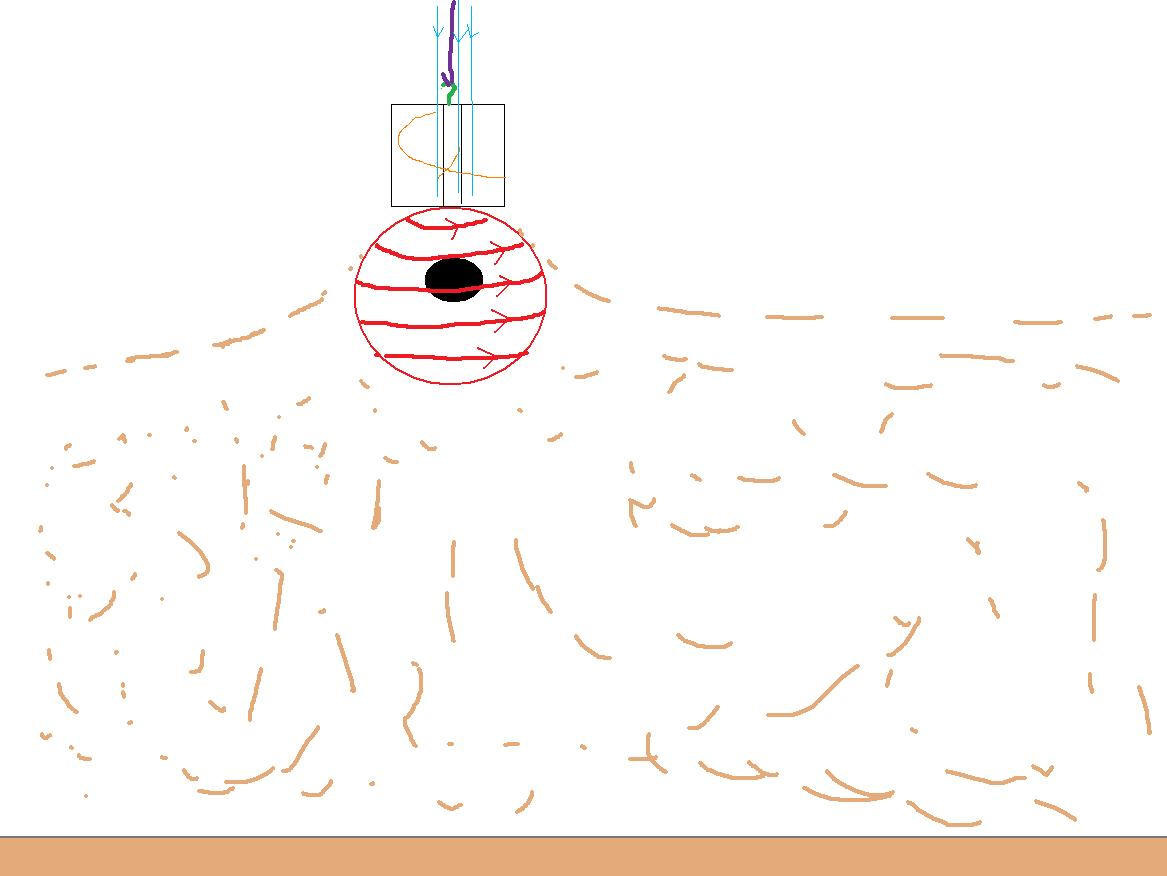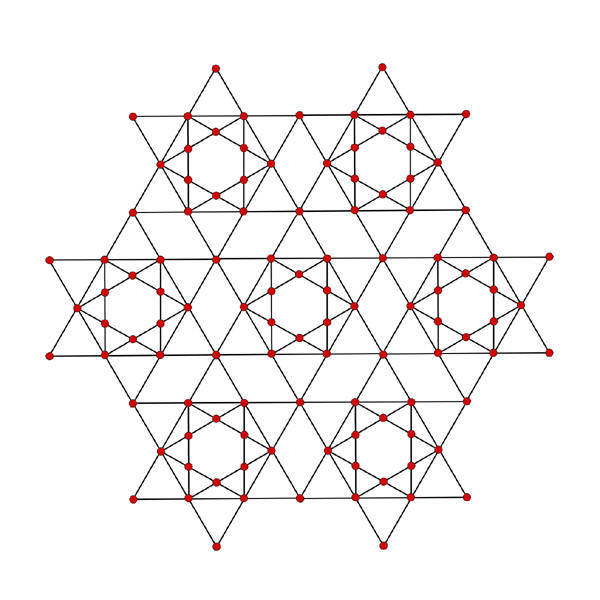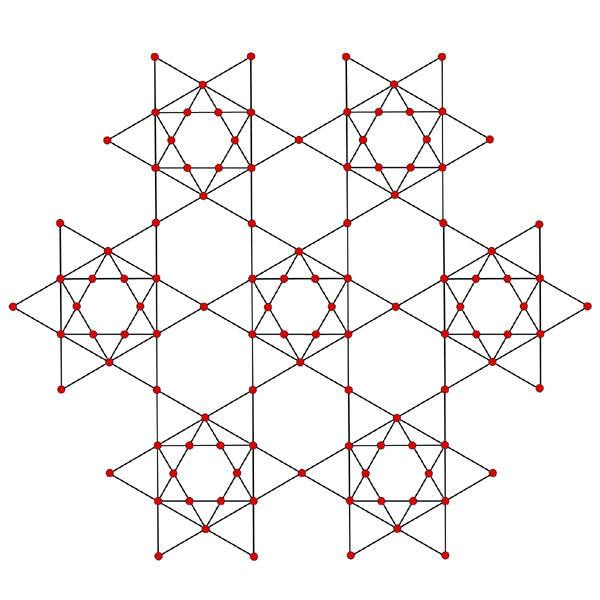34. India, October of 2008
My thinking in the summer of 2008: if the whole of southern Asia were not under the sheng canopy , the largest gap would seemingly be the Indian sub-continent. I had been advised that October would be one of the best times to enter this part of the world.
Hari, my guide and companion in Malaysia, had traveled there before, and had offered to accompany me at the appropriate time. My friend Lapping had offered to subsidize Cesco if he wished to go as well, and so Hari, Cesco and I came together in Chennai (old Madras) in early October.
As usual, we had to consider the problem of transportation. The railroad solution had worked reasonably well in Australia, and so we decided to try it in India: we bought month-long India rail passes. The modus operandi with these, once one decides when and where he wants to go, is to queue up in the appropriate line at the local train station, and obtain reservations (or be put on the waiting list), opting either for a sleeper (if the trip is to be at night), or a seat. There were minor problems with late trains, and one major problem when floods occurred during the Dinali holidays, which delayed a train for several days. But the method turned out to be sufficient for our purposes.Chennai is in the northeastern corner of India’s southernmost State Tamil Nadu. In India the States are subdivided into Districts. Chennai is in Tiruvallur District, and two Districts to the southwest is Tiruvannamali District, the district headquarters of which is Tirvannamali town. The word “tiruvannamali” means “fire”, which in Hindu lore is associated with the human chest. The Hindu god Shiva is said to have manifested himself in five specific places in southern India – in each of these places as one of the five natural elements: ether, wind, water, earth, and fire. Shiva’s fire manifestation was on Arunachala hill, next to Tiruvannamali town. The most famous object of the town is the large Arunachaleswar Shiva temple, which has been in existence since pre-history. Arunachala hill is a pilgrimage site, venerated as a healing place, and a source of spiritual knowledge.
We considered this to be a good place to begin our work. So we boarded a train to our destination’s nearest railroad station at Villapuram, and took a bus thence to Tiruvannamali, arriving in the late evening. Next morning we hired an auto rickshaw (the ubiquitous three wheel motorized open-air cart, which serves as the common man’s taxi in India) to take us to the temple.
Upon arrival at the main gate, I observed that there was a rather strong vortex on a high nearby hill. So we circled round the outside of the temple walls, asking for directions as we walked, and eventually made it to the trail which leads up that hill. This, we learned later, was the famed Arunachala hill.On the way up the trail, a young boy offered to lead us by direct route to the top. The way up was somewhat long and steep, and Hari offered to stay with what we did not need to carry, at a small temple along the way.
Following a fire which destroyed one wall of my house, I had decided to reside the whole structure, and had spent the summer in that activity. As a result, I thought I was in reasonable physical condition, but the climb up caused me to question that assumption. Eventually we reached the top, and immediately found and gifted the vortex: first things first. There were a couple other people on or about the summit: one painting, and one reciting some scriptures, so we had to be discrete.
After completing work and catching my breath, I surveyed the surrounding countryside – and found that there was a sha line passing directly through the center of the great temple and continuing on through a small hill several kilometers out of town.
Tiruvannamali Temple with sha line before CorrectionAs is often the case, the journey down the mountain was more taxing on the muscles than climbing up, and both Cesco and I were a bit sore when we met up with Hari again at the small temple near the base of the path. After resting up, we gave our little guide a tip, and walked back into town for much needed water and food. After lunch, we took another auto rickshaw to the small hill we had seen from Arunachala hill (though it wasn’t quite as small when we got there as it had seemed to be from above). At the top of the hill we located the sha line , and placed an appropriate distribution of six TBs to transform the line. From the top of the hill we had a good view of the great temple, and were gratified to see how the general feeling of the place had become more positive.
Then it was back via bus to Villapuram, where we spent the night, thence via rail to Chennai.
I had flown into India out of Shanghai, and from Shanghai to the Arabian sea across the Indian border of Assam. The sheng canopy had been unbroken, except for a moderately sized hole above southwestern China. But from Assam to Mumbai (formerly Bombay) on the west coast of India, where I changed from an international to a domestic flight, and then again across India to Chennai, there was no sign of a sheng canopy . And such was still the case overhead, when we visited Tiruvannamali.
We judged it would be better to travel in the cooler north earlier in the trip, and after arriving back in Chennai, where Hari had relatives, we set off north and west, taking a sleeper to the city of Mangalore in Karnataka State on the west coast, which we reached on October 8. After detraining, I took a fix on the nearest strong vortex, and we hired a taxi, directing the driver toward our target.
These situations are always a bit tricky, since we are unable to tell our drivers our exact destination, nor often even the distance to our destination: only the direction. The situation is further confused if a driver has small understanding of English. During the days just before our coming, and periodically throughout our trip, India was suffering from miscellaneous terrorist bombings, so inquiring taxi drivers’ minds wanted to know.
On this particular outing, we ended up in a suburb of Mangalore called Ulal. The vortex was on a hill, and we had the driver park at its base. Cesco stayed with the driver while Hari and I walked up the hill along the side of a road. This was not open country: everywhere were homes and gardens, and when we neared the vortex, there were several people just up the road eyeing us curiously. Hari walked over, engaging them in conversation, while I ducked behind a tree to treat the appropriate spot. Hari brandished his camera like a true tourist, but we were still regarded with curiosity as we returned down the hill. Later we learned that the neighborhood was an area of friction between Christians and Hindus, which may have had something to do with the interest our presence had wakened.
When we returned to the car, the cabby took us to small place for a good Indian breakfast, and thence to the a nearby beach,where I had my first view of the Arabian Sea.
Back at the railway station, we purchased tickets for Goa to the north.The old Portuguese colony of Goa was only returned to India in 1961, and has long been a tourist center. This meant we could expect better accommodations, but also higher prices. We arrived weary, late in the evening, without sufficient energy to hunt for a cheap hotel, and took what our driver presented.
Next morning we hired an auto rickshaw and pointed the driver in the direction of the nearest strong vortex. We ended up on the beach, which was not surprising, given that vortices near the coast tend to be most often on the beach (albeit sometimes on a nearby hill). It was a beautiful site, and the immediate vicinity being unoccupied at the time, we had the rare experience in India of being able to plant our TBs unhurriedly and unobserved.North of Goa is Maharashtra State, and our next target city was Ratnagiri, about half-way up the coast towards Mumbai. The vortex in that place was again on the coast, but here there was no sand, only rocks bordering villagers’ houses. So we had to place our TBs surreptitiously between the rocks.
Having finished our work, the rickshaw driver showed us a few places of general interest. One was a temple atop a hill overlooking the site of an old fort. The temple is dedicated to the Bhagwati Devi. Bhagwati is the avatar, also known as Durga, of the major goddess Devi of the Hindu trinity (the other two being the gods Vishnu and Shiva). Legend has it that there was once a demon asura named Mahishasur, invincible to man and god alike, raging destructively through all creation. The Gods went down to the sacred River Gunga (Ganges) to beg Devi to create a goddess that might destroy Mahishasur. Bhagwati, or Durga, was born out of Gunga, and it is said that she did destroy the asura, and is still revered for her fierce compassion.
When Cesco and I entered the temple, we were impressed by the high quality of the spirit therein. After showing due respect, as part of condign ritual, I was led to walk three times around the temple, clockwise.
We were stopping at places near the coast, since these typically offer relatively convenient access to latent vortices. We were still south of Mumbai, did not wish to enter that huge metropolitan area, and the town of Roha appeared to be the last good railway stop on the coast south of the Mumbai area. It was on this next stage of our journey that the sheng canopy appeared from the south and overtook us. From that day on during our trip, we were never without the sheng canopy above us.
Roha turned out to be only a very short train-stop, and much to the subsequent amusement of our fellow passengers, we missed it. We had no alternative but to continue and detrain at the next station Nagathani. It was dark when we arrived, but I sensed something in the vicinity which might be a vortex, and we found a place for the night not far from the station.
Next morning we went for a walk in the direction of the qi source, and found it was not a vortex, but a large cellular tower. This was not the first time I had made such a mistake. Back in 2006, when John Scudamore was driving Cesco, Rich, and I about the English\Welsh border looking for latent vortices, I had (much to my mortification) made a similar mistake.
So after breakfast, we took a bus north to Panvel, the next good-sized railroad city.There was sign of a strong latent vortex when we reached Panvel, and we hired an auto rickshaw to follow it. We wound up some kilometers outside of town, on a small mountain from which rock was being excavated. Because of danger from dynamite detonation, the rickshaw had to remain at the base, but Cesco and I walked up the road to reach and treat the latent vortex site.
North of Maharashtra is the State of Gujarat. Looking for a city in that State, along the railroad with coastal access, we settled on Surat. This was partly due to my curiosity concerning the Zoroastrian faith, for there was a Parsi temple in Surat.
The origins of this faith are known to be pre-Christian, but hidden in obscurity, and it is not known when the founder Zarathustra actually lived. He taught the concept of asha, meaning “truth”, or order (as opposed to chaos druj). Zarathustra said that God (Ahura Mazda) left to man the choice of whether he would use his time one earth to further asha – or druj.
Zoroastrianism was the dominant religion of Persia for nearly a thousand years, until it made contact with Islam, after which it declined in that country. Today in Iran it is practiced only sparingly, and usually in secret. In the 7’th century, many believers fled to India, where their descendants (presently about 70,000) in number, are known as parsis. In their temples are kept a holy fire, said to have been brought from Persia in the old days, and kept continuously alive by their priests.
When we visited the temple in Surat, we were not permitted inside the temple proper – only practitioners of the religion could enter. We were told that even among the membership only a few were permitted into the sacred room containing the fire: just the priests, after many years of training, could witness and tend the fire.
By the Entrance to the Parsi Temple in SuratBut the spirit of the temple was much less exclusive than were his devotees. As we stood across the street, looking into the main entrance, he appeared to us in welcome: as strong and joyful an entity as I have ever come across in a place of worship.
After passing some time immersing our minds in the wonderful ambience, we decided it was time to go to work, and so we set out via bus and auto rickshaw toward the coast. Here, on the Arabian Sea, we found and opened our sixth vortex.
Camel at the Arabian SeaThe next morning we visited the Parsi temple again, and again the temple spirit came out to greet us. He seemed to have a particular connection with Cesco. There were several proofs of this, but the most overt one was that the spirit told Cesco that he should purchase one of the pieces of sandalwood which were for sale in a booth across from the temple. The particular piece he was to purchase had a quite strong and positive entity associated with it, the qi of which strongly resembled the qi of the temple spirit.
We had thought to journey next up to Bikaner in the Great Indian Desert, but found that tickets were not to be had. This alerted us to the imminent approach of the Hindu holiday Diwali. The week of Diwai is homecoming week for millions of families in India, and public transportation is reserved for this period months in advance. So for the coming week we just had to take what was available, and for the week after that simply just not travel at all in India. We were able to get tickets to Amritzar in the Punjab, on the Indian/Pakistan border. This was Sikh country, and their famous Golden Temple is in Amritzar.
Guards with Miscreant Malaysian Captive on Golden Temple GroundsA couple of Indian university students, whom we met at a transfer train station, kindly guided us to this impressive temple. One has to remove his shoes, wash his feet, and cover his head to enter the grounds. Non-Sikhs were permitted to pass through the sacred shrine in the center of the lake within the temple. However the traffic was so heavy, one could not stop to appreciate the holiness of the place, but had to hurry along.
Next day we hired an auto rickshaw to find the strongest vortex in the region. Our target turned out to be in the countryside, some 20 kilometers outside of town. The weather was beautiful, and the the land even more so. The farmers and field hands were uniformly friendly, which we found to be pretty much the case elsewhere in rural India as well. There was no difficulty in treating the vortex once we found it, and on this occasion we were visited by joyful sylphs.
A Welcoming Punjabi SylphWe thought it prudent at this point to buy tickets for the remainder of the coming week. Our plan was first to visit Allahabad, which was the home of a temple housing a nearly two thousand year old tree, thence to Buddhgaya, where Gautama Buddha had reached enlightenment under the Bodhi tree, from there to travel up to Gang-Tok in Sikkim, at the foot of the Himalayas, and then go south again, through Calcutta, back along the eastern coast to Chennai.
In Allahabad the Yamuna River flows into the holy Ganges, and the temple with the ancient tree was located in a fort near the confluence. All three of us had digestion problems at one time or another during the trip, and Cesco’s turn was in Allahabad. Consequently he rested up in our hotel room, while Hari and I went out to see the temple. We hired a rickshaw to get out to the place, and the driver deposited us with some people who ran a ferry business. These led us to believe the temple was across the river, and offered to ferry us for 500 rupees. We agreed, sat down in the boat, and looked around as our hosts began rowing us out into the river. In a short while we caught sight of the temple, on the same side of the river from which we had set out. So we had been scammed. This was annoying, but not nearly so much as it might have been, had I not also noted that there was a vortex on the other side of the Yamuna. So we had the boatsmen let us off on that bank for about 20 minutes, while we made our way to the vortex and back. Once back in the boat, we directed the oarsmen to return to the side of the river with the temple. But they indicated that since we were so near the Ganges, we should at least let them row us there before going back. We declined, but they persistently kept at us, and at length we acceded. Scammed again it turned out, for when we reached the confluence, our boat drew up next to another anchored at the spot, and they had us remove our shoes, and board the other boat. Here was a Brahmin priest, with assistants. These latter wanted us to buy a couple of coconuts placed in paper boats, so that we could present them as a gift to Mother Gunga, the goddess of the Ganges. I declined, but Hari, who comes from a Hindi family, did purchase some offerings. Now the Brahmin led Hari through a ritual speech prior to placing the offerings in the water: the Brahmin dictated, and Hari would repeat after him. When it was done, the priest demanded a thousand rupees for his service! Hari gave him a few, but nowhere near what he was demanding.
Brahmin Plying his Trade on the GangesThe whole experience of coming to the Ganges, which should have been a positive one, was disappointing.
Finally back on shore, we walked to the fort, entered through the walls, and approached the temple. Even here, and within the temple itself, we were ceaselessly accosted by people asking for money: there was never a chance to simply stand quietly and enjoy the place itself. We did get to see the famed tree, which was suffering from old age, and I tried to help it a bit, but under the circumstances I suspect I did not do much good.The next stop was Gaya, the closest rail town to Bodhgaya. This is one of the poorer parts of India, and indeed there seemed more beggars here than elsewhere. They were even organized, with native English speakers bringing tourists to beggars, getting kick-backs. Buddhists visit Bodhgaya from all over the Buddhist world, and have built numerous temples there – but the chief tourist attraction is the Bodhi tree. The present tree is in the same spot as the original, where the Buddha sat in contemplation some two and a half millennia ago. A seedling from the original was brought to Sri Lanka, and it is a cutting from that seedling which is the present tree.
We visited the spot, and it is indeed holy. Some distance beneath the tree there is a concentration of joyful qi. After paying our respects, we walked through the business district of the small city, and out into a suburb where was a latent vortex on the bank of a small stream. We had to bide our time, sitting on the bank, until the villagers no longer paid attention to us, before we could treat the vortex. On the way back I slipped and fell into the stream. I did not obtain enlightenment, only muddy pants, and so I can vouch that it was not the famed stream created by Gautama Buddha’s arrow so long ago.
From Bodhgaya we traveled via auto rickshaw to Gaya, and thence by bus to the city of Patna on the north-south railway line. Patna was likely the most dirty city through which we passed in India. We were scheduled to board the train north to New Jalpaiguri at 10:30PM, but it was about 1:30AM when it finally arrived. We passed the time swatting at mosquitoes and observing various other insects,
and rats.
It was afternoon the next day when we reached New Jalpaiguri, and took an auto rickshaw into the city of Siliguri, whence we boarded a 4-wheel drive recreational vehicle up into Sikkim, arriving in Gangtok about 10PM.Next morning it was Hari’s turn to be ill and remain at the hotel. Gangtok is a picturesque town on a mountainside,
View from Gangtokwith adjacent parallel streets differing in elevation by perhaps 20 or 30 feet. Fortunately there was a vortex in town, and Cesco and I set off to find it. On a map it would not appear more than a mile from our hotel, but in actual distance it must have been several times the apparent map distance. It was on the top of a hill, and as we climbed the hill it looked to be an easy catch. But as we neared the top of the hill, the way was barred by a steel fence and door. We roused the gatekeeper and requested admittance, but he would not let us in. We feared it was some sort of military installation. Walking round to the other side of the hill, we found the entrance to the 200 year old Enchey Monastery, housing about 90 Buddhist monks. The site is said to have been chosen by Lama Druptob Karpo, who is said to have flown thither from Maenam Hill in South Sikkim. A soldier was on duty at the entrance, with whom we struck up a conversation.
The monastery occupied about half the mountain top, and its grounds were separated by a fence from the other half. It was on the other half that the vortex was to be found, and we asked the soldier if we could pass through the gate in the fence. He said that the grounds and house on the other side were the headquarters of the old Raja, that it was private property, but that we could go in for a few minutes to take a look. We did so, and though locals were passing by us coming up the hill, we were able to find opportunity to open the vortex.
Coming back to the monastery grounds, we visited the temple, in which dwelt a fine respectable spirit, to whom we paid our respects. Coming out of the building I found that worshippers were walking three times around the temple, in a clockwise direction. This recalled to mind my own circumambulation of the Bhagvati temple in Ratnagiri a week earlier.
Later that day we visited a renowned museum in Gangtok, where ancient paintings, artifacts and scrolls were on display. Some of these bore quite interesting spirits, but not all good.
That evening Cesco and I did some shopping, and in on antique shop I happened across a good piece of jade. By good, I refer to the qi of the piece, rather than its jewelry value. Jade, as a stone, is unique in its receptiveness to qi and spirits. But a good piece can literally be one in a thousand. I have visited the huge jade markets of Taipei and Hong Kong several times without finding a single good piece. But here in Gangtok was one. The tell-tale positive qi was in a small fragment of a carved fish. The store owner was surprised that I was interested in a broken piece, and tried to interest me in something whole. But I persisted, and after searching, found the completing fragment. Placing the two together resulted in a piece much better in feeling than either of the two separate parts. Since it was broken, the cost was only about 250 rupees (just under 4 dollars). It is not unusual that good stones, when they can be found, are not expensive.It was now nearly time for the Diwali holidays, and we had to decide what we should do. The sheng canopy was overhead, and we had good reason to believe it was over all of India. Thus further work in India might be somewhat redundant. All three of us were suffering illness to some extent, and we felt a break would be welcome. Cesco opted to return early back to Europe, Hari decided to pass the holidays in Chennai where he had kin, and I chose to accept an offer by old friends to spend a few days in Taiwan. Hari took the train back south to Chennai, but Cesco and I got off at Calcutta. Cesco’s plane actually was out of Chennai, but he feared the train would not get him down south in time for his flight. I felt he was being unnecessarily careful, as he had the better part of a day in extra time between the scheduled arrival of the train and the scheduled plane departure for London. But it turned out that he was right, as floods caused the train to be delayed by over a day, and he would have missed his flight, had he had not flown down from Calcutta. This was not the first such case in which Cesco’s intuition had proved more effective than reason.
As with nearly all travelers from the West who spend any time in real India, we had our intestinal problems. There is a solution, to the effectiveness of which I can personally attest. A century ago, when the Japanese and Russians were going at it in Manchuria, the Japanese Army suffered seriously from dysentery. An herbal pill was developed, which cured the problem, and in after years it became known as (translated roughly into English) “Beat the Russians Pills”. Taiwan was under Japanese occupation for 50 years, from 1894 until 1944, and traces of Japanese culture live on there. I bought my bottle in Taipei:
After Diwali, I met up with Hari again in Chennai, and we we took the train down to Madurai in the south of Tamil Nadu. There is a famous Hindu temple in that city, and Hari had had an interesting experience there on a previous visit to India. So I was curious to see it. Unfortunately, not being a Hindu, I was denied admittance into the interesting parts of the temple. During Diwali there had been more terrorist bombings in India, and security was again more strict than usual.
So we gave up on the temple and hired an auto rickshaw to search out a new vortex. This took us out beyond the airport into the countryside. As usual, the driver was suspicious of our intentions, and as Hari and he had a common language (Tamil), he finally asked Hari what our purpose was. Hari explained, and when he had acquired a measure of understanding, was happy to wait for us, while we hiked off-road to reach the vortex. We passed several people in the fields though which we passed, whose photos we took, and generally had a good time in reaching the vortex. This was number 11:
Site of last Vortex we Opened in IndiaHari remarked that in this trip we had been able to gift every vortex we had tried to gift. I believe this is the first such international journey I have made.
My trip back home took me from Chennai across the country to Mumbai, thence across mid- and north-India, over Assam, over south-western China, into Shanghai, along the coast of eastern Asia, and over the Pacific to San Francisco. This time, along the way home, we never flew out from under the sheng canopy .
The weather was good, and I had opportunity to observe the qi on the earth’s surface in various places. Where the sheng canopy had been present overhead for some time, sheng qi had built up on the ground and ocean beneath. The only exceptions were the water along the coastlines, where for some reason for some distance from the edge of the water out into the ocean, the sheng canopy was not present on the water’s surface. I could feel it in the ground below the water, but not on the surface until a mile or so away from the coast.Most Indian food is highly seasoned, by US standards at least. But one could order something more mild off the Chinese menu, which many restaurants in India carry. Here is one from a Siliguri eatery at which we dined several times:
35. Hanford, January of 2009
At the confluence of three rivers, just north of the Tri Cities [Richland, Kennewick, and Pasco]) of Wasington State is the world’s first site for mass production of plutonium.
(Columbia R. in purple, Snake R. in green, Yakima R. in yellow, and Hanford in white)Its name Hanford derives from a town on a bank of the Columbia which, along with the town of White Bluffs, was demolished during preparation of the Hanford Site. Development was begun in 1943 and by 1945 regular shipments of plutonium were being delivered to Los Alamos Laboratories in New Mexico. The bomb dropped on August 9, 1945, over Nagasaki, Japan, was made with plutonium from Hanford.
Eventually there were built nine weapons-production reactors on the site, the last working one having been shut down in early 1987. There remains a huge amount (53,000,000 gallons) of liquid radioactive waste, stored in 177 underground tanks. About a third of these tanks have leaked waste into the groundwater. It is estimated that about 270,000,000,000 gallons of contaminated water are now present in nearby aquifers and that 1,000,000 of these are traveling toward the Columbia, expected to begin entering the river some time about or after 2020, if not intercepted by cleanup. In addition to the liquid, there are about 25,000,000 cubic feet of solid radioactive waste buried on the site. Various cleanup operations have been undertaken and scheduled, but cleanup has proceeded behind schedule, and there have been continuing efforts by the States of Washington and Oregon to keep the Federal Government on task.Alejandro who, along with Javiera, accompanied me on my trip last year through Chile and Argentina, was visiting my home for about a half week, and he suggested we make a trip to Hanford to try to improve the sheng qi there. The area had been gifted before, but with the amount of nuclear waste present, there was almost certainly need for further attention. I thought it was an excellent suggestion.
We poured 31 EPs and a good sized batch of TBs on Saturday the 17th, and the following morning set out for Hanford. Reaching the city of Othello about 11AM, we turned south on State Highway 24, crossing the Saddle Mountains, and turning east again, drove along the northern end of the Hanford Reservation.
About midway across, when the sha qi underground began to feel rather strong. we stopped among the frosty sagebrush, and planted our first EP . This spot was also chosen because a sha line crossed the road there, and we were able to bury a 6-TB circle and transform the line to a sheng line . Ale remarked to me that he experienced here the same curious visual phenomena he had the previous year, when we opened our first vortex in Santiago.
Several miles further east, the highway angled to the southwest, running closer to the Columbia River, across from the world’s first two large-scale plutonium reactors (known as “B & C reactors” on the Hanford Reservation). We stopped the car and took a good look. Here is a photo found by Ale, obviously taken during the summertime taken from within the Reservation:
(“B” Reactor with Gable Mountain Behind and to the Left)
The next two photographs were taken a week after our visit, when I returned to see what, if any, change had occurred.
(View across the Columbia toward the original reactor sites “B” and “C”)
(A view from the west of Gable Mountain and Gable Butte)The large hill to the right of the photograph just above is Gable Mountain, which is the highest geologic formation on the Reservation. Although it was not a latent vortex, it was quite negative when we first observed it, and there was at least one sha line passing through it. An additional sha line , roughly at right angles to the first, if not directly through the mountain, passed at least nearby – there was visual obstruction which prevented me from determining the exact crossing point. Three or four miles south of where Highway 24 bridges the Columbia, prior to coursing around the end of Untamum Ridge, the first sha line crossed the road. At this point we pulled off to the side and did two things: (1) placed a 6-TB circle to change the line positive, and (2) buried a PM .
Further south the highway forks, with 24 turning west, and Highway 243 continuing southeast through the Reservation. We followed along 243, placing EPs when the ground felt particularly negative, until we came to where the second sha line crossed the road. Here we placed another 6-TB circle to make it positive.Eventually, as we neared the city of Richland, we realized that we did not have enough pipe for all the EP -inserts we had brought. So we found a building materials store (Home Depot), purchased a couple long stainless steel 1-inch pipes, and had them cut to size (which was done at no extra charge). After this and a quick lunch, we headed up the west side of the Reservation, along roads open to public access, attempting as before to cure the worst feeling places.
At one point we had the good fortune to find a public-accessible latent vortex, which I was able to open. This rapidly created a positive feeling in that area of the Reservation, which brought us encouragement.Shortly after opening the vortex, evening coming on, we headed back. We decided to return the way we had come, partly to see if any change could be observed, and partly because there were several places we had omitted earlier, which were good candidates for EPs .
By the time we reached the Gable Mountain area, it was too dark to accurately identify qi -sources, but it felt much better in the general direction of the mountain.
We placed our last EP in the dark, not far removed from that place where the first has been placed that morning.A week later I drove to Seattle for a family gathering, and on the way back altered my return route so as to take Highway 24 from the east, and to pass again along the northern edge of the Hanford Reservation. This time I brought my camera and took photos shown here. Though the ground beneath the Reservation was still negative, Gable Mountain was quite positive. This seemed to be good evidence that transforming two crossing sha lines will have good influence on the crossed area.
In all we placed three PMs on the Hanford Reservation. I intend to go back around the area later this year to witness what effect they will have had on the sha qi underground, being constantly emitted by the radioactive waste.
36. Middle East, April of 2009
With the global financial crisis ever worsening, and trouble imminent in the greater Middle East, I felt some urgency to extend the sheng canopy over that area. When the unusually long winter receded from the Palouse in the beginning of April, I set off toward Dubai for a beginning on the Persian Gulf.
The trip began inauspiciously, as I misread my plane schedule and arrived at the airport of my home town just ten minutes after the plane had left. My good friend Clare Wiser drove me up to Spokane, where I found a flight to Seattle. Here I just missed the second phase of my regularly scheduled flight to London. Several hours later I made it onto a flight to Vancouver, and thence to Calgary, where I finally did board the third stage of the London flight. In London I found that my baggage had not fared so well, and said baggage, while later spotted variously in Dubai, Nicosia, and Malta, never did catch up with me, its present location being unknown.
The result was that I was for nearly a month with only two shirts, two pair of underwear, one pair of pants, one pair of socks, and no shoes (just a pair of sandals). Much more important however, was that all my TBs were in that baggage, and I had nothing with which to open a vortex on the Persian Gulf. I located a latent vortex on the beach near Dubai, in the hope and expectation that the baggage would arrive before I had to leave. But that was not to be.
Since this was the last time I was to see that area without a sheng canopy above it, I should record that at this time the qi in the sky was slightly worse than normal, but not the worst pre-sheng canopy I had seen. It was similar the the qi in the sky I was to feel when I first arrived in Israel and Egypt, but as I recall, it was a bit worse than that which I felt when first flying into Cyprus and Turkey.On the 12th I left the United Arab Emirates for the island of Cyprus in the eastern Mediterranean. I was met at Larnaca Airport by the doughty Antoine, who has gifted so many towers on the island. The next day we created many TBs , as well as two new CBs , and opened up a latent vortex in the suburbs of Antoine’s home city of Nicosia.
The day after that we headed for the mountains, where Antoine’s grandparents have a summer cabin. Within a mile of the cabin we found and opened a good latent vortex, and within a hour’s drive from there, near a weather ball on one of the highest mountains of Cyprus, we found and opened a quite strong latent vortex.The following day Antoine drove us along the southern coast to the east, and we opened up several more latent vortices. The most interesting of these was on the site where the main temple of Aphrodite had stood throughout antiquity.
It was one of those semi-rare sites where the qi of a latent vortex comes to the surface not just at a few points, but over an area of several acres, and one can open the latent vortex by placing a TB anywhere within that area.
On the 16th Antoine drove me to the de facto Greek-Turkish border crossing in Nicosia, whence I took a taxi to the Ercan Airport on the Turkish side, for a flight to Istanbul. The sheng canopy was now over Cyprus, likely having come down from the Balkans to the northwest, which had been under a sheng canopy since the summer of 2007.
Cesco, who had come down from Oslo via Baltic Air, met me at the airport with a goodly supply of TBs . The first day we found and opened latent vortices on both sides of the Bosporus, which connects the Mediterranean to the Black Sea.
Next day we found a third latent vortex in the city, but it being in rather a crowded and well-watched area, we had to hang around a couple hours until we had opportunity to secrete our TBs undetected. On the way back to our room downtown, someone filched my passport on a busy streetcar. This was on a Friday evening, and the US Consulate being then closed until Monday, we were unable to take the trip to eastern Turkey we had planned. During the weekend we did however take several ferry trips and opened several more latent vortices on the eastern part of Turkey. It was during that weekend the the sheng canopy first appeared overhead in Istanbul.On Monday I obtained a new passport, as well as a new visa (from a quite efficient and helpful Egyptian Consulate in Istanbul).
On Tuesday the 21st we left Istanbul for Tel Aviv, flying directly over Cyprus. We continued under the sheng canopy all the way, until about a third of the way from Cyprus to Israel, where we flew out from underneath.After learning that my baggage had not reached Israel, we hopped the first bus to Jeruselem, and at the bus station there searched the internet for a suitable place to pass the night. We wanted an inexpensive place in the Old City, and found it in the New Swedish Hostel, on King David Street. This hostel was not new, being a warren of rooms within ancient stone walls, and the only thing Swedish about it was a blue and yellow sign above the entrance. It was said to have been founded by a Swedish woman many years before, as safe and modest accommodations for single women visiting the Holy City. Now it was run by a bluff frank Arab, who seemed not much to care if his visitors stayed or not. The small common kitchen was upstairs and adjacent to an even smaller office. Other guests for the night included a Romanian French teacher on holiday who hospitably insisted that Cesco and myself share each part of her evening meal with her; a German man working in visual arts who took us to a small but good restaurant in the Arab quarter, where everything was relatively inexpensive; and a retired circus performer from the Ukraine, with a gold wig and purple nails, accompanied by her elderly father. The conversation around the kitchen common that evening was bizarre but hilarious, with a mix to languages including Arabic, Hebrew, Russian, German, and English. With the exception of the manager, who was something of a polyglot, most of us only understood about a third of what was said, but that did not diminish the good feeling. I however slept the night in the common sleeping room, with my passport and wallet under my pillow.
Many of the streets of the Old City are narrow, and the walls meet overhead so that one does not see the sky. We were told that this is in part because it makes it difficult for visitors to find their way about, and so gives employment to guides. In the morning we left the Hostel with all our possessions on our backs, and made our way eventually to Temple Mount, or Mount Moriah as it was known in the Days of Eld. The old stories have it that it was hither that Adam was led when turned out of Eden; that it was here that Abraham was told by the Lord to sacrifice his son Israel (which in the end did not come to pass of course); that it was here that Solomon built the temple containing the the Holy of Holies (sanctum sanctorum) in which was deposited the Ark of the Covenant; that it was here that the remains of Solomon’s architect Hiram Abif were deposited by his murderers under the roots of an Acacia tree; that it was here that the Romans, after destruction of the second temple, left standing as an admonition to the Jewish people, what later became known as the Wailing Wall (or Western Wall, as it was called when we visited it); and it was here, whence Mohammed is said to have ascended to Heaven to collogue with his predecessor prophets, and over the rock from which he was said to have departed, and on which he was said to have returned, was built that golden dome: now known as the Dome of the Rock.
In these days, to approach the Western Wall, one must pass through metal detectors and a search resembling that which Homeland Security subjects those boarding a airplane in the US. We of course had our TBs , and the guards were more than a little suspicious that these might be bombs or something else nefarious. At length however, we so far persuaded them that the TBs were harmless, that we were permitted admission onto the square to the west of the wall. There were many orthodox Jews next to the wall reading aloud from the Torah. I walked over to see it more closely, and found that there was a holy entity about three fourths of the way up on the right hand or southern half of the wall. I knelt to offer condign respect, and asked if there was anything with which someone with physical presence could do to help. An answer came in the affirmative, and directions came to perform a sort of (mental) scrubbing and spreading of the qi throughout the wall. At some point in this process I felt I should enter the shelter on the northern end of the wall to continue. As I entered, an elderly Jew dressed in black with broad-brimmed hat approached me, and asked if I were Jewish. After receiving my answer, he asked consecutively if my mother were a Jew, if my father were a Jew, or if any of my grandparents were Jewish. All of which questions being answered in the negative, he then told me that if I were to enter, I must first give him some money. This seemed strange to me, but as I had a duty to perform, I emptied my pockets of change, gave it to him, and entered.
Afterwards I found Cesco, and we entered a line of people queued in front of the single entrance to the top of the Temple Mount. Here again we had to pass through strict security with our back packs. Upon entrance, we found that by far the most impressive structure was the Dome of the Rock, above and in which could be felt a quite strong and holy presence.
One thing which sets Old Jeruselem apart from any of the other cities I have visited on my trips, is the omnipresence of people in uniform with guns. It may very well may be necessary to protect the innocent, but at the same time it is rather disconcerting. One such soldier, apparently a Muslim rather than a Jew, from the manner in which he answered our questions, was seated opposite to the entrance on the west side of the Dome. I asked if it were permitted non-muslims to enter the building, and he said, “No Way!” I learned later that others had been permitted years ago, but that some zealot from Australia had set fire to the place, and since then only believers of Islam have been permitted in, except in special cases. Cesco went off to the side to show his respect in private, and I walked around the building once for examination. Coming back to the western entrance, and wishing to show my respect to the holiness within, I removed myself back a distance from the entrance, laid down my pack, and faced the place in an attitude of prayer. The armed guard became immediately incensed, jumped out of his seat, and ran over to me, angrily demanding I pick up my stuff and follow him. I told him that I had not known prayer was not permitted from without. This mollified him no whit, and he forcefully escorted me off the Temple Mount, depositing me at the Western Gate, earnestly enjoining me, never to come back. I told him that my friend would not know where I had gone, to which he replied, “Tough luck!”
There are two sheng lines which cross under the Dome of the Rock. Below is a photo showing how this goes, the arrows showing the direction of sheng qi -flow:After a couple hours, Cesco and I eventually connected back together at the New Swedish Hostel on King David Street, but we both felt that we had had our fill of Jeruselem. We found a place for breakfast, and by good fortune made acquaintance there with a young man whose brother owned a car.
I thought that it was quite important that we open up a number of latent vortices in Israel, and suspected that the Dead Sea would be a good place to do this: the area was centrally located, it was near a body of water, and it was sparsely populated.However, like other places in Israel, there were Security Guards to avoid, and so we felt it would be good for someone who knew his way around to drive us. With his help we were able to open five latent vortices that afternoon, on or near the Dead Sea shore, and the driver, in due time, deposited us near the border city of Taba, not far from the northern cost of the Gulf of Aqaba.
When Cesco had had his passport photo taken, his beard and hair were both rather long. On this trip they were trimmed short, he often passing as a clean cut young muslim. As we crossed into the Egyptian side of the border and showed our passports to the mustachioed guard on duty, he looked long and hard at Cesco’s photo, then at Cesco, and gravely shook his head. The guard asked me if I knew Cesco, and of course I vouched for him, saying I had taken many trips with him. The guard stared at the photo again, then at Cesco, and shook his head again, quite dolefully. “What is then to do?” exclaimed Cesco, looking worried. The guard burst into a huge smile, laughed, embraced Cesco, and waved us across the border.
It was now nearing dusk, we had had a long day, and so we hired a car to take us on to our next stop, the small town of St. Catherine, in the middle of the Sinai desert.
Several years before, Cesco had come upon a book The Ladder of Divine Ascent, written by one Saint John Climacus, living as a hermit about 600 AD. This work was written to guide monks along the path of religious perfection. Climacus lived only a few miles from the monastery of Saint Catherine. This monastery is situate at the foot of Mount Sinai, where Moses was said to have received the Commandments from God, and a bush said to be a direct descendent of the Burning Bush of Scripture grows within the monastery walls. Due to the historical location of the site, it had been the destination of pilgrims from early times, and the monastery was constructed in the 5th century by the order of the Emporer Justinian.
Cesco had been much impressed by The Ladder of Divine Ascent, and suggested to me that Saint Catherine’s might be an interesting place to visit.
We arrived after dark, and in spite of our representation to our driver that we wanted a cheap place to stay, he took us to a rather fancy hotel in town. Fortunately for us the place was already full, and so he took us to a much more suitable place called Fox Camp, where we found accommodations for 25 Egyptian Pounds (about $5 US) per night, per person. The clientele ate together in a Bedouin tent around an open fire. The bathrooms were outside, but functional, and we ending up staying four nights.
Fox Camp was about a 20 minute walk from the Saint Catherine Monastery, and we arrived at the monastery’s the only public entrance, just before opening time at 9 the next morning. There was quite a large gathering of tourists there ahead of us, they having arrived mostly on buses. We decided to open a latent vortex first, and come back later when the crowd had disipated somewhat. The latent vortex we had located was on a mountain not far away, which we later learned was named Mount Jethroe. One of the monks told us the next day, that according to old lore, Moses climbed that mountain each day during the time he and his people sojourned in the area. The vortex was special, in that it fed a river of qi, which passed directly over the valley of the monastery. Here is one of the sylphs which appeared to us as we sat resting after our ascent:From the top of Mount Jethroe, Cesco and I gazed down over the Monastery,
and he asked me what I thought of the qi about the place. There was a line of qi passing down Mount Sinai, through the basilica, across the small valley separating the monastery from the mountain on the opposite side, and up that mountain. It was a sha line and there was a massive negative entity feeding on it, beginning at monastery and extending all the way up the opposite mountain. We decided to climb that mountain, to try to do something about it.
So we made our way down Mount Jethroe and up a trail which extended about halfway up the other mountain (lying to the right in the photo above), ending at a small uninhabited complex of buildings in a locked compound. Cesco found a way to circumvent the complex, and we slowly made our way up without a trail. The mountain was actually cleft in its upper part into two parts.This made the climb much less difficult than it would have been otherwise, and it also made us nearly invisible from anywhere but inside the cleft. Not far from the top we came to where the sheng line crossed. The sha being feeding off the line was quite annoyed. In fact, it seemed as if it somehow knew we were about to cause it trouble. Fortuneately there was one spot on the sha line over which had accumulated soil sufficient that we could bury and conceal a circle of 6 TBs . After setting the circle up optimally, and burying it, the sha line became a sheng line quite rapidly. The dominant emotion of the sha being changed from anger to pain, and within a short time we could feel no more trace of it. Cesco directed my attention up to the sky, where there were quite nice sylphs displaying good cheer.
By the time we had made our way back down, it was late afternoon, and the monastery had long shut its doors to the public for the day. We were weary, and headed back to Fox Camp for a rest.
Next morning was Friday, and the monastery would only be open to the the public for an hour in the morning. We took care to arrive on time, and this day we saw the bush and the beautiful basilca. But more that this we felt the positive river of qi flowing above and the sheng line flowing through the monastery. Below is a lithograph of the place made by one David Roberts in 1839, with a Mount Horeb in the background.That afternoon I noted that there was another latent vortex part way up the mountain at the northen side of St. Catherine town, and climbed up to open it. Coming down, and turning back to check it out, I noticed that away to the north, just above the crest of the mountain, was visible the edge of a sheng canopy flowing rapidly our way, perhaps 30 kilometers distant. Within an hour or so it had arrived, halting just above river of qi. We remained in St. Catherine another day and a half, but the sheng canopy did not avance further south during that time.
Our plan had been to take a bus north and west to Cairo, thence to inspect the pyramids. However events had transpired over the past weeks which demanded my early presence both in Taipei, and back in the Palouse. Furthermore, it was reported that Taliban troops were fighting Pakistani Government troops only 60 miles from Islamabad, and rumor had it that American troops would be sent into Pakistan if the Government turned out to be unable to handle the situation. Cesco and I talked it over, and we both felt that as we had completed most of what we had set out to do, we should leave Egypt. We modified our travel schedules, and two days later left St. Catherine for the nearest international airport at Sharm Al Sheik.
We left Fox Camp early in the morning by auto, and spent a couple hours at the town of Dhahab, on the Gulf of Aqaba, waiting for a bus. Here we found another latent vortex, which we gifted.At Sharm Al Sheik we found a strong latent vortex on the seashore, but this was more difficult, for the shoreline at this resort town is mostly not open to the public, but taken up by various hotels. We were denied entrance by one hotel (for security reasons they said), but one of the guards was sympathetic, and showed us where we could climb up and follow the fence between his hotel and the neighboring one. Cesco watched our bags while I followed the fence, and fortuneately was able to pass by the guard of the other hotel without hindrance, to reach and treat the vortex on the seashore.
That night when we flew out to Cairo, the sheng canopy was overhead, and it continued overhead for the the remainder of my trip. Reaching Cairo, Cesco and I parted ways, he for Oslo and I for Vienna, where I hoped to catch a Monday flight for Taiwan.I did not make the Monday flight, and the next was not until Wednesday morning, so I phoned up my friend Manfred in Pinkafeld, and he graciously agreed to put me up for the interim. His family, especially his wife and daughter, was quite gracious in feeding me and giving my clothes a much needed washing. Manfred took off work for Tuesday, and took me around to various interesting places in the vicinity, including a latent vortex on a hill, which we opened, and the remains of an old Nazi temple on a hill commemorating the Anschluss (or incorporation of Austria as part of Germany in 1938). At one time there was a great golden eagle on a pedestal in the center of the temple, but that had been long gone when we visited it.
There was a sha line through the temple, and Manfred and I made it positive using 6 of his good TBs .
I much enjoyed my time with him, as I found his sensitivity of qi rather similar to mine, and we were able to discuss and compare things with each other, which we seldom have opportunity to do with others.The first leg of the flight from Vienna to Taipei was over Turkey, Syria, and Iraq to Abu Dhabi, which city is less than 100 miles from my first stop of the trip Dubai, where due to non-arrival of my baggage, I had been unable to open a vortex. However the sheng canopy was overhead throughout the flight, and I was gratified to learn that this sheng canopy was now over the entire area.
The next leg of the trip passed over the gulf of Oman, and Karachi, before heading east over India and China to Taiwan. We were ever under the sheng canopy , from which I infer that the Euopean canopy is now connected to that over East Asia. Since I know that, as of last November, the latter was at least as far north as Amritsar on the Pakistani border, I should not be surprised if it is now over the remainder of Pakistan and even Afghanistan.
Thanks are due to Antoine, Cesco, and Manfred; and recognition to Google Earth and MSN Encarta; for the illustrations in this report.
37. Russia (July of 2009)
To extend the sheng canopy to northern Asia required a visit to Russia. Travel is relatively difficult there, with the long distances and low population density in Siberia. There are eleven time zones in Russia.
I decided to buy tickets on the Trans-Siberian Railroad. Most commonly, the American or European visitor travels from west to east, beginning at St. Petersburg or Moscow, and riding to Vladivostok or Beijing as an eastern terminus. Thus it seemed it might be less crowded and more interesting if I took the other direction.
I left home on June 3, stopping in Taiwan for about a week to help a friend. My plane out of Taipei on the 11th had a mechanical problem in flight, and so had to return to Chiang Kai Shek Airport for brief repairs. When it finally arrived in Korea, it was too late to make my connection to Vladivostok, and so I had to stay in Inchon overnight. I found an inexpensive room not too far from the airport, and close enough from a latent vortex to reach it on foot. There was already a sheng canopy overhead, but as there had previously been no latent vortex opened in Korea, it seemed right to open one.The flight next day arrived in Vladivostok about 4PM. I had been warned that taxi drivers might lie and tell me that there was no train into the city – and that turned out to be the case. Nor did the station attendant contradict the driver, when I appealed to him for confirmation or contradiction. It was a Russian holiday, and the only currency exchange office at the airport was closed. However the taxi driver’s friend exchanged some dollars for rubles for me, at a not good, but acceptable rate. When we got out of the building, I saw a bus quite a distance off, and although the taxi driver objected, saying that that bus did not go into town, I walked over to investigate. It did in fact go into town, directly to the train station, and the fare was much lower that the proposed taxi fare.
When the bus arrived at the train station, I immediately went to the proper window to exchange the vouchers I had received by email for physical tickets. I was lucky, in that the office was scheduled to close less than a half hour after I arrived, and my train north to Khabarovsk was to leave that evening.
I had planned to spend a day in Vladivostok, but because of my stop-over in Korea, I only had a couple hours, and there was no latent vortex close enough to reach during that time interval. However, the sheng canopy was overhead. I bought some bread and cheese and sat down on a bench near the port side docks to eat a leisurely dinner waiting for departure time.I had purchased 2nd class tickets, which mean a sleeping car with compartments containing four bunk beds: two above and two below. This was the only leg of the trip where I had a fluent English speaking companion in my compartment. He was a surgeon, teaching at the medical school in Khabarovsk, and had been to America in some sort of medical exchange program. He told me that his monthly earnings in Russia were the equivalent to about $1000 per month.
We arrived in Khabarovsk early in the morning, and the surgeon kindly took me up to the area in the train station called “resting rooms”. Not all the stations on my journey, but the majority of them, had these rooms, which contained from two to ten or so beds. For about the price of a hostel bed you could purchase a “resting room” bed for a day, or a day and a night, if you had a ticket for a trip out. The room in Khabarovsk had five beds, of which three were vacant. I choose one near the window, and settled down to rest for an hour or two.
Once people had begun to move about in the streets, I walked down through the town to the Amur River, where there was a pleasant public path along the bank through the city. A mile or two south there was a latent vortex, so I hiked down there and opened it. On minor problem in Russia is the dearth of free available toilets. There are sometimes pay toilets in public places, but they are invariably locked, and it is not always easy to find where to go to pay and get the key: especially when you don’t speak Russian and you are in a part of Russia where few speak English. Fortunately I could read a bit, but few could understand what I attempted to say, nor could I understand most of what was spoken to me.
On the way back to the station I found an internet cafe in the basement of the post office, and so was able to let my wife know I had made it to Russia intact.
There was no sheng canopy over Khabarovsk when I arrived, nor when I left the next morning. The edge of it was visible to the the south, moving northward, when the the train left for Chita with me on it. About a quarter of the way from Khabarovsk to Chita the sheng canopy passed overhead. I was never again during the trip to move out from beneath it, nor to see any sky where it was not present.My train had arrived in Chita at just before 2AM, and Chita Station had no “resting rooms”. So I had to sit up in a chair until daylight. About 7AM I checked into a hotel, so as to get my entry card registered. It rained most of the time when I was there. This was uncomfortable since I had no rain gear, but the bad weather made it easier for me to open unobserved the latent vortex I found off in one quarter of the city. That night my train left at 1AM, and I wanted to walk to the train station in the daylight, so I had about a 3 hour wait before departure.
After waking in the morning, and very haltingly greeting my sleeping compartment companions in Russian, I realized that I was likely going to have many hours of time on the train by myself, without conversation.
The scenery was interesting from time to time, but for long stretches the tracks were lined with birch trees, and it was not easy to see the countryside behind them. I found it singular that in Siberia, especially eastern Siberia, nearly all farms and settlements, and even towns, were surrounded by solid fencing. It made me appreciate somewhat why the original meaning of the English word town, was fence.The next stop was Irkutsk, and we rode a considerable distance alongside spectacular Lake Baikal on the latter part of the trip. The train station lies on the one side of the Angara River, and the city on the other. Coming in on the train, I espied a latent vortex on the town side, and after checking in at a youth hostel, went out and found, and opened it. I then sat down on the river bank, made myself a sandwich of bread and cheese, and “splat”: a direct hit from a bird above in the middle of the sandwich. I am not quite sure of what that was a confirmation.
From Irkutsk the train took me to Krasnoyarsk on the Yenisey River. Here I was able to find another “resting room”. Coming in on the train I had seen a latent vortex down river, but after about a two mile walk from the station, I found that the approach road was heavily watched by guards. Hence I headed back up river, and eventually found another latent vortex in a park within the city. It was a gray day, and early enough that few people were around. I was able to open it with little difficulty.
Boarding the train the next day, I inadvertently dropped a wallet containing my entry card, but little else. When I discovered it a couple minutes later, I rushed out to try to recover it, but it was already gone. For the only time in Russia, I spoke to a policeman, but he seemed only annoyed that I should be worried about something so petty – he said I could pick up another when I left the country. I did not quite believe him, but was to find out at the end of the trip, that he was correct. This train took me to Omsk, where the Om and Irtysh Rivers join. Here again I was able to stay overnight in a “resting room”. The vortex in Omsk was downtown, and I had take a bus several miles to get within walking distance. It was on a river bank, as all the vortices I opened on this trip, except for the one in Chita.
From Chita I journeyed to Yekterinburg, known as Sverdlovsk in Soviet times. There I stayed in a youth hostel, and opened a latent vortex in a park on the Isel River.
Thence to Kazan on the Volga, where there was a latent vortex not far from the train station. The river was beautiful, and there was a beach not far from the vortex, where young and old were soaking in the sun. I did not spend the night there, having arrived in the morning and being scheduled to leave that night. Shortly before dark I went back to the area of the vortex, where I witnessed a curious phenomenon. In a radius of perhap a 100 yards or meters, the qi was flowing circularly about the vortex. Furthermore around each of the telephone poles in the area, qi was flowing circularly in a radius of about a yard. For most of the poles, the flow was the same orientation as that around the vortex, but for a few it was opposite.
The final stop was the capital city Moscow. I had reserved a bed in a hostel within walking distance from the railroad station, and after a little trouble, found it and took a shower. I could feel a latent vortex in the general direction of where my map indicated the Kremlin was located, and so set out on a hike. After going some way, I found that it was not in the Kremlin, which was probably just as well. It was in the Moscow River some way off, and I had to be a bit careful to open it without exciting notice. When the job was done, I walked along the river bank, crossed the river on the Bolshoi Moscowretski Bridge, and took a look at Red Square and the buildings about.
Russia is a huge and interesting country, and I have here said quite little of what I saw in it. But after all, this is a report mainly concerning the etherial, and there are many other sources treating the wonders of Russia.
The trip back was rather uneventful: Moscow to Prague to New York to Seattle to home – everywhere under the sheng canopy.
38. Fall Events (Late August, September and October of 2009)
By late summer of 2009, the only place in Europe which I was not reasonably sure was under the sheng canopy , was the Iberian Peninsula. Cesco and I had penetrated into France south of Paris in 2005, but I had never been so far south as Spain, and I felt I needed to know if that country were under the sheng canopy .
I still had a ticket to America from London, since I unexpectedly had had to return from the Middle East trip via Taiwan. Friend Rich’s wedding was on September 5, so it seemed right to attend the wedding, and then fly down to Gibraltar and back before going home.
After returning from Russia, I received an invitation to attend the IWONE conference in Höör, Sweden, held during the last few days of August. The conference was inspired by Viktor Shauberger’s work, and was about non-standard energy sources and vehicle propulsion, and the extraordinary properties of water: subjects of which I knew little, but for which I had some curiosity. So I decided to begin my trip a week or so early and attend the conference.
Furthermore, I had enjoyed my too short stay with Manfred last spring, and wished to follow up on a few things with him.All these things in fact went well. A new friend Marcus Gullberg, whom I met at the IWONE conference, invited me up to Helsingborg afterwards, and we found a strong latent vortex on a small mountain on the coast, near Höganäs, as I recall.
The visit to Gibraltar came after visiting Manfred in Austria, and when I reached the island, I realized that the sheng canopy was already over the area. Not on the “Rock”, but on a nearby hill was a strong latent vortex, and after a several hour hike from the airport I was able to open it up.My trip home was through London, New York, Vancouver, Seattle, and Spokane. Nowhere did I come come out from beneath the sheng canopy .
…My work in Taiwan was still not completed, and I flew there on October 1, returning on the 8th. I brought the flu back with me in the form of a sore throat which by the 10th had grown more serious and forced me to go to bed for a couple days.
The trip back from Taiwan was through Tokyo (Narita), San Francisco, and Seattle. On the San Francisco-Seattle leg the weather and visibility were good, and my throat keep me sufficiently awake that I looked somewhat closely at the etheric phenomena along the way.
I saw that there were various spots with a quite a positive feeling, such spots as I had not noticed before. One was in a large lake, and they seemed to be in lower ground rather than higher ground in general.
I decided to climb up Kamiak Butte when I got home, to get a stationary panoramic view before I came to any conclusions.The flu hit me reasonably hard, and it was several days before I felt up to climbing Kamiak, but I did so on Tuesday afternoon, October 13. Seated on an old log I could see the hills and mountains for an area of about 500 square miles. I counted roughly 20 such places in that area, where the sheng qi caught the eye or senses. Looking closely I found that sheng qi was swirling down from above to these places (counter-clockwise when viewed from above), and then moving directly down into the earth, as far as I could feel.
For some time sheng qi has been falling from the sheng canopy , concentrating in the beginning through the trunks of trees. Looking closely at the conifers on top of Kamiak, I could see that this was still the case, but that the sheng qi was moving much more rapidly through the trunks than before.
The cycle of qi from the opened vortices up to the sheng canopy and then back down again into the earth seems to have increased in speed: now there are actual vortices going down as well as up. At least I know this is true in the areas on the Pacific Coast and in the Palouse where the sheng canopy has been in existence the longest.
39. Guatemala (January of 2010)
On my trip back from Chile in 2008, the sheng canopy was overhead from Santiago to about the southern border of Mexico, and then from about San Diego on home.
But since then the strength of the sheng canopy , where present, had increased; it would extend further than formerly with each newly opened latent vortex, and had even been extending on its own. I suspected that it had spread over Mexico in the interim, but needed to find out for sure. Ale and Javi had told me that they would join me in Mexico at some later date, so in the winter of 2009 I wrote Ale if early 2010 would be a convenient time for them.
He said that they would have time in January, but that due to unrest in Mexico, Guatemala just to the south might be a better place to travel. I agreed, and he recommended Tikal in particular as an interesting place to visit.The ancient Mayan city of Tikal dates back nearly to the time of the Iliad and the Odyssey, and during the Golden Age of ancient Greece was a great city of pyramids and temples. This was the beginning of the classic period of Mayan civilization, and it continued as an important city for another millenium and a half, until sometime in the tenth century AD, when it was abandoned to the jungle. Archeological restoration was begun in the mid 1950’s, and it is now a national park, located in the northeastern part of Guatemala, west of Belize City.
There is good cheap communication by land from Belize to Tikal, so we elected to meet in Guatemala City, fly to Belize City, and take a bus thence to Tikal.My flight to Guatemala City left from Chicago at 2AM, and as I fell asleep shortly after take-off, still did not know upon arrival, whether the sheng canopy covered Mexico. Our flight to Belize (formerly British Honduras) had been moved up two hours, which prevented me from making connection.
We were forced to stay in Guatemala City for a day. Ale told me that the travel in the city was somewhat dangerous outside of the hotel area, due to roaming gangs of robbers.
Across the valley of the city however ranged some impressive mountains, on one of which was arrayed an extensive group of cellular and other types of towers. We decided to hire a ride up there, and see what we could do about reducing the sha qi . There was a sha line going through the towers. We found and exploited a good place on the line to place an array of 6 TBs , with the result that the whole area of the mountain turned positive. It was a good feeling that afternoon, walking back along the road through the trees to where our driver was parked.Next day we flew west to Belize City, whence we took a van/bus east, across the Guatemala border, on to the Tikal National Park.
We arrived just before dark, and the park was closed for the night. Years before, Javi’s father had seen the sun come up from the top of the highest temple, and she wanted to repeat the experience. The park opened at 6AM and sunrise came at 6:15. Since the temple was too far into the park to reach and climb in 15 minutes, she inquired if there were any way we could enter earlier. Turned out that there were some professional photographers which had hired one of the park guides to take them in early, and for a modest contribution, the guide offered to let us come along too.
Shortly after our bus had left Belize City that afternoon, I had noticed the presence of a strong latent vortex far to the west, and throughout the trip it continued more or less to be in our direction of travel. When we drove into the Park somewhat after 5AM the next morn- ing, I noted that it was right in the park, but due to the dark and fog could not pinpoint it as we drove along.
We made it up to the crown of the temple before daybreak, but the fog was so thick that morning, we could not see the sunrise.We descended, deciding to use the time during which we still more or less had the park to ourselves, to locate the latent vortex. We found it, in the middle to Temple #6. [This may or may not be the correct number of the temple. I give the temple a number here merely to remind myself, should I have reason in the future.].
Fortunately one of the critical points was not on the tem- ple itself, and so I was able to treat it, and open the vortex.I was somewhat in a hurry to complete the opening before other visitors should come in from the park entrance, and so omitted to first feel down in the earth below the temple structure.
Quite soon after placing the TB qi began to bounce up and down within the structure, and it was only then that I observed the situation down below.
There were two distinct thin levels of sha qi below, the qi in the structure repeatedly bouncing off the upper one up to the top, and then back down again.
This continued for just a short time, until the two negative levels were pierced, and then sheng qi surged up from the large reservoir reaching deep below, up through the top of the temple into the sky.
The only vortices I recall that perhaps matched this one in strength and volume were the one in Magaliesberg in South Africa and one in the Atecamba in Chile.By now there were other people exploring the park and we wandered about among them, viewing and marveling. When we came to the main square of the city, the feeling was rather negative, which turned out to be due to a sha line flowing through it. There was no secluded place on the square to repair the line, so we went outside the square, and I climbed partway up a hill between the square and the path leading into the park, to find a place on the line where one could position 6 TBs. After burying them, I started back downhill. It was somewhat steep, I lost my footing, and had to stop a headlong descent by grabbing a tree. From the tree I came clumping down fast again, startling a new visitor coming up the path. When we returned to the city square however, we found the feeling of the place quite positive. Ale in particular noticed it: his sensitivity of these things has increased markedly since I met him some two years previously.
At one point we came to bowl-shaped site, which reminded me of somewhat similar places I had seen in Africa and Chile. Here, as in some of the places in northern Europe surrounded by stone circles, I was requested by a respectable entity to re-initiate a circular flow of sheng qi around the natural boundary. As before, I had to position myself in the center, fix my gaze on a point of the boundary, and turn about in a counter-clockwise manner (as viewed from above). After several minutes, when the turning had increased to somewhat of a whirl, I could feel the sheng qi moving rapidly around the upper part of the boundary. Now however something began to interfere with the process.
I slowed to a stop and looked around. There were several people coming over the top of of one of the hills which formed the boundary, so I paused to let them pass on through.
Ale and Javi had been standing over on one side quietly observing, and one of the people who had come over the hill walked over and struck up a conversation with them.
Meanwhile I was engaged in running from one place along the boundary to the next, arranging the qi in various places preparatory to another turning session. When this phase was completed, the man who had been speaking with Ale and Javi walked over to me. He stared at me in a quite serious way, and in Spanish, asked if I spoke Spanish. I said that I did not, only English, and noticed that he wore some quite curious objects about his neck.
Ale told me later that the man was apparently a Mayan shaman, and that he was concerned that I was practicing some sort of black magic. Since I could not speak Spanish, I spoke to him in that curious language that ones soul sometimes uses to speak directly with another soul. I suspect that his conscious mind did not directly understand the words, but on some level he did understand, for his attitude lightened, and he went back to the side while I finished the process of getting the sheng qi whirling about the boundary of the area: now turning below as well as above.
When done, I walked over to the three of them, and with Ale and Javi acting as interpreters, explained that my actions were not of my own initiation, but at the request of a quite respectable entity there. I do know know how much he believed me, but he did invite me to visit a special cave nearby. I accepted and we all walked a little way off to where there was a chamber in the rock in which a candle was burning.
There was a strong respectable entity inside, and the shaman invited me to go in and meditate. I went to the entrance, knelt down to pay respect, and asked if there were anything I could do for it. There was, and afterwards, I turned back and we four spoke again.
I will respect the privacy of the man and the place, and not speak more about that here.
The shaman was some sort of groundskeeper for the park, and he had been looking for us to show up.We left the park just before noon, and spent the night in the Guatemalan city of Flores, traveling back to Belize the next day. Several days later I left the country, flying north to Houston, in clear weather. During the first part of the trip the vortex in Tikal was easily detectable from the plane. During the entire trip, over Belize, Guatemala, Mexico, and Texas, the sheng canopy was present overhead and strong.
On all of the the plane trips of the week, whenever the visibility was sufficient to observe, I noted that there were plenty of swirls of sheng qi coming down from the sheng canopy into the ground, as described in the previous chapter.
40. The Richest Hill on Earth (June and August of 2010)
In mid-June my wife and I drove from Washington, near the Idaho border, to Minneapolis, Minnesota, and back. The sheng canopy was overhead the entire way, as I expected.
Both going and coming we passed through Butte, Montana, in some ways the most interesting city of Montana.
It was settled as a placer mining camp in 1864, and in 1870 its population was 241. In 1875 quartz mining was introduced, which stimulated growth and prosperity, and the 1880 census shows population to have been 3363. Successive censuses show 10,723 in 1890, 30,470 in 1900, and 39,165 in 1910.
Though the state capitol was (and is) Helena, it was said that the most important political decisions during days of the copper kings were made in Butte. Its population peaked at about 100,000.
For many years, beginning with the discovery of gold in 1862, mining was the leading industry of Montana. The prospect of finding gold and silver brought in people in the early years, but it was the discovery of rich veins of copper in Anaconda and Butte in 1882 that brought real wealth to the state. By 1900 Butte was producing half of the copper in the United States. Mines were dug beneath most of the city, and the city flourished until 1940, when mining declined and increased use of machinery caused the population to diminish.
When the big copper deposits were discovered, Butte was given the nickname “The Richest Hill On Earth.” By 1955 most of that hill was gone, and the Anaconda Copper Company began pit mining, in what became known as the “Berkeley Pit”. When I saw it about 1970, the pit was so deep that you could not even hear the motors of the huge machinery at the bottom.
The pit eventually engulfed a good part of the old city. My grandparents, mother and uncles had lived there in the 1920’s, during the heyday of the city, and Iron Street, where their house had been, was one of the streets which was no more.
In the late 1970’s the pit was closed down, and water began to fill the mammoth hole. The water became extremely toxic, so much so that by the early 1990’s any birds which had the bad luck to rest on what had become a toxic lake, were likely not to survive the experience. It is now America’s largest Superfund site.
The larger of the early copper companies in Butte combined into the Amalgamated Copper Mining Company under the ownership of early copper king Marcus Daly, and financiers William Rockefeller, Henry Rogers, and Thomas Lawson. It later changed its name to the Anaconda Copper Mining Company, and in the 1920’s had a vir- tual mononopoly of mining in Butte. Anaconda Copper became part of ARCO (Atlantic Richfield Corporation) in 1977, and in 1982 ARCO ceased operations in the Berkeley Pit.
Other pits have been dug in the area since, but the great days of mining in Butte are (apparently) gone.
What are not gone are the toxins left from the mining and smelting of the ore. Much arsenic, lead, and sulfur came out into the air and ground from the smelting process. This was so deadly that, as my mother told me, most of the smelting was moved from Butte to Anaconda. It has been estimated that at that time 36 tons of arsenic and 1540 tons of sulfur were released by the Anaconda smelter. Pollution from mine tailings extended 150 miles downriver, almost to Missoula (home of the University of Montana).But this is by way of background. The point is that before the “richest hill on earth” was mined away, one of the strongest latent vortices of the earth was present on that hill. The image below is prepared from a contemporary NASA photo taken from above:
Butte city proper is in the lower right corner of the photo. The black area to the left of the city is the toxic lake inside the Berkeley pit, and just below the pit is the suburb of Walkerville. To the left and slightly above the pit is what seems to be a holding area, to prevent runoff from the surrounding hills into the toxic area.
I have enclosed the area from which the vortex now rises out of the ground by an irregular red circle. When it was still dormant, the points where it touched the surface were irregularly spread around the outside. I was only able access a few of them, but that turned out to be sufficient. When it opened, the results were spectacular, as it was “visible” all the way from my home nearly 400 miles (600 kilometers) away. The only vortex which I had previously observed which was visible from nearly such a distance was the Magaliesberg vortex in South Africa.Yesterday (the 10th of August) I passed through Butte again and had opportunity to observe reasonably closely the dynamics of the qi connected with the vortex. Below is a schematic sketch of the qi dynamics of the area:
The solid red at the top represents the massed positive qi which is now around most (if not all) the world: the sheng canopy . The orange below it rep- resents the weaker sheng qi which has gradually been working its way down from above. The dirty green represents the slightly negative qi which forms a layer between the ground and the positive qi. The black represents the ground. The light blue to the left represents the water in the holding reservoir, and the dark blue represents the toxic water in the Berkeley Pit.
the yellow represents the sheng qi which is swirling up to the surface from below. Note that some of it pools off underground reaching into the two bodies of water. The two yellow lines, angled slightly from the vertical, show the outlines of the vortex swirling up through the atmosphere. These turn to a greater angle as they leave the slightly negative and then enter the slightly positive qi up about cloud level. This change of angle is reminiscent of the phenomenon of light refraction, as light passes from matter of one density into that of another.
The purple arrow represents negative qi flowing directly downward from above into the center of the vortex.
41. Alaska and the Arctic (August of 2010)
On August 22 my friend Cesco arrived in the Palouse, and on the morning of the 24’th we boarded an Alaskan Airlines plane in Spokane, bound for Barrow, Alaska (via Seattle, Anchorage and Fairbanks). Four years previous we had driven just north of the arctic circle in Norway, but I was curious whether the sheng canopy was over the arctic or not, and particularly whether it was over the north geographic and magnetic poles. Barrow is the northernmost town in the US, and being a terminal for a major airline, it seemed the most accessible place to visit where I might find answers to these questions.
It was a sunny day with good visibility, and the sheng canopy was overhead until our plane on the Fairbanks-Barrow leg reached about 50 miles south of Barrow. There was no sheng canopy over Barrow or as far as I could see over the Arctic Ocean.
We disembarked about 7:30 in the evening. The thermometer read about 40 Fahrenheit (6 Celsius), and we immediately set about finding somewhere to stay. According to several natives we queried, it would not do to camp outside, due to wandering polar bears. According to what we heard, the males of the species frequently weigh more than 1000 pounds, can easily outrun humans, and can sneak up on one amazingly soundlessly. Since there was about five hours of darkness impending, we decided to look for somewhere to stay INSIDE. There were only four hotels in town, the prices for rooms were quite high (about $250 for a room for two), and that night there was nothing available anyway. However Cesco talked a man at Ilisagvik College in Narl (about four miles east of Barrow) into letting us bed down in an empty room in a construction site nearby. The inside room was three sides of plywood, no door, and of course unheated, but we were quite pleased under the circumstances, and spent a reasonably comfortable night in our sleeping bags. From outside:
Next morning we hiked out along the coast, and eventually reached a strong latent vortex which I had felt the night before. On the way we both felt a presence off in the sky to the northeast which was obviously unhappy. And its rage increased proportionally we approached the latent vortex.
We opened up the vortex, and afterwards its rage faded into a whimpering, and then disappeared. One of the latent vortex points:
TB on a Vortex Point on an Arctic BeachAfterwards Cesco, who took all these photos, caught me doing a little dance on the beach, as this marked the end of our task spreading the positive canopy.
The remainder of the day we spent in Barrow:
Street Sign in Barrow, AlaskaThat evening we took Alaskan Air through Fairbanks to Anchorage.
Several days later I looked up north from central Anchorage and felt far to the north a strong concentration of sheng qi.
42. Colombia (November of 2010)
In November of 2010 I received an invitation to come to Bogota from my friend Ale, who was studying some new medical techniques with an MD there. I arrived there on the 20th. Ale had arranged for me to stay with one of his friends near the old city center, and near the doctor’s office.
In December of 2007 a Austrian friend Manfred had discovered that TBs directed downward over pipe sections placed in a 6-pipe circle would spread sheng qi through the ground in a wide area. These have been already been described in the chapter “Chile and Argentina (January of 2008)”. Manfred named this apparatus a “peacemaker”. Ale had put one in the ground in a friend’s yard, several blocks from the doctor’s office. For some reason which we never discovered, it was not working correctly. So the day after my arrival we dug it out and replaced it new pipes and TBs.
The result was that the ground in a wide surrounding area turned positive. The positive area is roughly disc shaped, and the diameter of the disc gradually grew larger over a period lasting several days.
Less than a half mile away from the peacemaker stood the mountain Monserrate. Bogota’s altitude is about 8612 feet (2625 meters), and the mountain rises up another 2029 feet (527 meters) above that. At the top of the mountain is a magnificent church with a shrine to which many pilgrims climb each year. When the sheng qi from the peacemaker had finished its expansion, it reached about half way up the mountain.
At the top of the mountain was also a latent vortex. Ale and I went up several days later and opened up the vortex. One result of this was that the sheng qi in the ground from the peacemaker expanded all the way up and past the mountain. This was somewhat similar to our experience three years earlier in the Argentinan town to Recreo, when we found that by opening a latent vortex on the edge of town, all the cell towers in town began radiating sheng qi . The towers in the part of the city near Monserrate also began radiating strong sheng qi .
There is a building between where I was staying and the peacemaker which was suffused with sha qi when I arrived. This was a meeting place for a fraternal organization with connections to freemasonry. After the new peacemaker was buried, much but not all of the sha qi was driven out. Ale did some interesting things to eliminate the remainder. I will leave it up to him to provide more detail if he wishes.The Colombian MD Jorge with whom Ale was working had a farm about a half day’s drive from the capital. The weekend I arrived was lengthened by a holiday and Jorge took us to his farm and showed us some of rural Colombia.
A particularly interesting place was the city of Armero, which had been destroyed in 1985 from the lava flow of the volcano Nevado del Ruiz. The flow had been so rapid, that about 23,000 people had died in the city. Two-story buildings had had their first level filled as a result of the flow. There were many mosquitoes, plus an latent vortex in the ruins, the latter of which we opened.At Jorge’s farm we did several experiments. The most interesting one had to do with trying to increase the fertility of the area through application of a device Marcus, an engineer friend Thomas, and myself had developed in Helsingborg, Sweden in February of 2010. The device will be described elsewhere, but consists of a TB attached to a sphere with a copper wire running through and around the TB and sphere. The sphere must be hung above the area to be improved. We had some success where we experimented with it in Sweden, and so we decided to try it here in Colombia. Ale’s talented friend Francesca was the most agile and best climber of the group, so she climbed a tree in the field and suspended the device from it.
I will try to report later what, if any, effect it had.
The part of Jorge’s work that interested me most involved magnets. The method was developed by Dr. Isaac Goiz of Mexico City. Most, if not all ailments of the human body involve qi imbalance, and there are at least two special points in the body connected with each single ailment: one exhibits sha qi and the other sheng qi . That with the sha qi is stronger. But if the south pole of a strong magnet is placed on the sha qi spot, the sheng qi spot becomes stronger. Then, if the north pole of another strong magnet is placed on the sheng qi spot, a current of qi flows through the body, and swirls around the poles of the two magnets. After a time (from a few seconds to few minutes) the flow slows and stops.
Jorge told me that many diseases can be treated this way more effectively than by traditional means, and some cures can be effected quite rapidly. I personally found that bodily pains and sore places can often be ameliorated by this method quite quickly.
Some quotes from Laozu regarding orgone and orgonite, archived at whale.to
Charging water/crystals using a CB
Put crystals in some clean water in a glass jar. Then take the center pipe temporarily out of your CB and place the jar on the stabilizer over the center hole. Leave them there for about three hours or more, and then remove them before you pour your TBs. But only take the crystals out of the water just before your pour the TBs, because the crystals begin losings their extra power as soon as they come out of the water.
Positive orgone movement as a result of cloudbuster deployment
During the first four months or so of his first CB, Laozu published a log of its effects. One of the effects of the CB that emerged was that an area of positive qi, roughly in the shape of a disc centered about the CB, gradually increased in radius (although in a rather zigzag fashion), until an area nearly a hundred feet in radius of ground about the CB was almost always positive.
Nearby the CB were planted a line of fir trees, and several TBs were placed on the ground next to some of them. At some point qi began entering into those trees from the ground up, and it eventually reached the tips of the firs. By the end of the period the firs were penetrated by the POR nearly all the time
During the next month and a half Laozu tried to visit the other latent vortices he could find within about a fifty mile radius. On October 12, while driving to work to Idaho again, his eye happened to catch on the top of a pine tree along the side of the road. He noticed that positive qi seemed to be in the tip. Looking at other trees he discoved that this was not an isolated phenomenon, that each living tree had some positive qi in its upper part, from just inches up to more than a foot. By the 17th, the qi was about 1/3 of the way down the trunk from the top; by the 26th about 1/2 of the way down and by the 31st about 70% of the way down. On the 31st Laozu took the following photograph of a birch tree (as seen further above in this thread):
the red shows the penetration of the qi on that day. The brown shows the penetration of the qi on November 5th.
Observations thus far seem to indicate the following inferences:
That after a sufficient number of vortices are healed and/or a sufficent number of CBs and other orgonite devices assembled in a particular area, POR will form a canopy high overhead;
This canopy may spread gradually, as more vortices are opened about its perimeter;
If a “river” of POR is opened, the canopy tends to extend towards that “river”, often quite a considerable distance;
Under the canopy, positive qi will descend into the tress, pass into the vertical tips, thence through the trunks into the ground.
This last process is reminiscent of the water cycle: from ocean into the sky, down again in rain, and eventually back into the ocean through streams and rivers.
Non-Material Beings - devas, sylphs, undines, salamanders and other elementals
Non-material beings or entities can be characterized by their qi. In fact I only became aware that such things really existed back in 1983 in Taiwan, when I first felt the qi of one of them in a Buddhist temple, and investigated more closely.
Examples of non-material beings are angels, those which have responsibility for seeing to the welfare of certain geographic locations (spiritus loci) or (tu di shen) [as they are called in China]), those which have responsibility for looking after trees (devas), those whose responsibilities lie in the air (sylphs), those whose responsibilities lie in the water (undines), those who are associate with fire (salamanders) and the elementals which often have responsibility for specific plant (or other) organisms.
The qi of the nymphs, sylphs, and devas which I have observed has always been quite positive. There are some beings whose presence is such that one innately is led to show them great respect: the qi of these entities is extremely positive, and it is to this group that what are often termed angels belong.
Sylphs will sometimes clothe themselves in wispy clouds, making their outlines visible to the physical eye. But not all such wispy clouds contain sylphs.
Non-material beings can be classified as to the feeling of their qi. Those characterized by positive qi, I will refer to here as sheng beings, and those by negative qi by sha beings.
Though I have not given names to any particular classes of sha beings, such things do exist, and seem to be quite as numerous as sheng beings.
Keep it simple when making cloudbusters
The ONLY coils I use with my CBs are “little secret coils” a la Cesco. When making your first CB, if you don’t have these, and you probably don’t for they are hard to get and even harder to make, I recommend using no coils. As Spade says, SIMPLICITY is the word here. Many more CBs have been made worse by adding extras by beginners than have been made better.
Resin or not in pipes? If you put no resin in the pipes, and insert the crystals at the bottom of the short pipes with a section of hose or something similar for filler, the crystals can be taken out later if they need or are desired to be changed.
Putting resin in the the pipes around the crystals is not good, unless you can put shavings or BBs around the crystals. If there is room for the metal, I usually do it this way, pouring metal and resin to the top of the crystal. I live in a cold climate, and this prevents the water from getting around the crystal and freezing in the winter. But this is just personal preference.
DTs are best here, but if you cannot find DTs, STs will work. If you use STs however, make sure the negative end of the STs is down. This is the rough, non-terminated end of the ST.
I haven’t used glue Karen, but my instinct is not to use it. There are different kinds of glue, and the odds seem pretty high that there would be some ingredient in it that would weaken the working. Of course this is just a guess.
Advice for orgonite device construction
I’ve been working with and observing this stuff for about three and a half years now. My findings and opinions are not all mainstream, but I have based them solely on personal observation.
- It is quite possible to construct orgonite devices which have negative effects on qi lines in the ground and high level entities in the neighborhood.
- When a negative orgonite device is created or obtained, it is better to take a sledge hammer to it and dispose of the small pieces than simply throw the offensive device into a landfill. If it has copper pipe in it, it is OK to reclaim the pipe and reuse it.
- Most of the negative pieces come as a result of being too fancy in the construction. Leaving the state of mind of the builder aside, I will list some purely physical problems in the construction:
- Each piece of crystal has its own field, and placing several crystals close together can effect a negative interaction of those fields.
- Interactions between quartz crystals and magnets can be quite tricky. I have seen a case where addition of neomagnets in the ground next to a (good in itself) orgonite device has caused a line of qi on which the device was laid to turn negative.
- Coils wrapped about crystals in orgonite devices are more likely to make the devices negative than positive, unless the maker has a well-developed energy sense. Just moving a coil a few millimeters can change the effect enormously.
- Adding various stones can make things worse, unless the maker is talented and knows what she is doing.
- Adding metal other than shavings can have a negative influence.
- Plastic in the ingredients or enclosing the product can be negative, though not as much so as some of the other things.
- Unfortunately, when making orgonite devices, people turn to innovation because such is fun and interesting, and so there are many more negative orgonite devices out there than there would be if people would stick to simplicity.To the reader, anything I write is “according to me”. Of course I would not write it if I did not think it were true.
- This is a subject over which more people disagree with me than just about any other, partly because many people use coils as parts of their creations. My opinions have created some enemies that I know, and likely a number more that I don’t know.
- Any coil has its own etheric field, and it will interact with the field of a quartz crystal. Suppose, for instance, a simple copper wire is wrapped about a simple quartz crystal, in such a way that the interaction is as strongly positive as possible. Just moving the wire in one place, as much as a millimeter, can change the interaction to negative – or vice versa.
- So you have to be energy senstitive, or to trust the maker of the coil/crystal creation to know that you have it right. And if you trust to chance, you will have a much greater chance of getting it wrong than of getting it right.
Experimental orgonite device by Laozu, archived at whale.to
Double Vortex Egg Shaped Passive Orgone Generator
In the post “Flow of Qi Through a Circuit” was described how a current of qi will flow through a wire circuit, if the wire does not cross over itself, and if a TB contacts the wire at some point (the quartz crystal in the TB should be aligned parallel to the circuit and as close to the wire as possible).
When we were experimenting with such things last February at his shop, Marcus had the idea that we wind the wire around the outside of an egg-shaped form and then again back through a hole through the major axis of the egg.
Engineer Thomas built us an egg-shaped form out of styrofoam, having a hole through the center, so that we could test out the idea. At the time we used a PVC pipe which would fit the center, around which to wrap the pipe. At home I used a wooden dowel (actually a section of a mop handle) for the same purpose. Here is the dowel with the wire wrapped about it one time:
In the photo it is suspended from above by a string.Now the pole is inserted in the egg-shaped styrofoam and wound once around the egg:
(from the back of the egg);
(the first view rotated clockwise about 80 degrees);
(the first view totated 180 degrees);
(the first view rotated clockwise 270 degrees).The little square wooden knob on the bottom is screwed into the end tod the wooden dowel to hold the egg from slipping down.
At this point the apparatus does nothing. Only when attaches a TB does it have an effect. I tried using two different types of TBs: the one shown “here” and one made by a small conventional type, having cut a notch to the crystal:
In the photo just the top of the crystal is visible in the center at the end of the notch.
Here is the egg with the first tb attached:
(the positive end of the crystal is pointing downward)and here is the egg with the second tb attached:
(again the positive end of the crystal points downward along the wire).After the TB is applied (in either form) a current of qi begins to flow through the wire counter-clockwise (view from above). Thus it flows down around the outside and up around the pole.
As with a CB, this device has a strong induction effect on the qi of its surroundings. But the effects of the two devices are not the same. Both devices pull negative qi down from the sky above. The CB transforms the negative qi to positive qi, and sends it back up into the sky again in a laser line beam. The device described here, which I shall call a “double vortex” operates differently however:
- a swirling (counter-clockwise viewed from above) sphere of positive qi is formed just below it;
- positive qi moves out from the ball through space to the sides and below;
- positive qi concentraces in the ground below and moves out through the ground through a large radius.
Below is a schematic:
In the schematic above, the square shows the area in which the egg is enclosed; the blackd and green indicate the string or cord which is holding up the apparatus; the light blue arrows above show the negative qi coming down to the egg; the red ball shows the positive qi swirling below the apparatus, the solid brown at the bottom shows the concentrated qi spreading out in the ground below. The black ball inside the red sphere is a blob of negative qi which is surrounded by the positive qi.
The apparatus must be high enough above the ground so that the red ball does not touch the ground for the it to have strong effect. In general, two meters high should bring it above the ground.
If the TB is removed from the egg, the field in the ground disappears almost instantaneously. When the TB is attached again, the field of qi in the ground begins to form again, but it will take some minutes before it extends far out.
Although we have spoken of an “egg” throughout this post, I have found that a “sphere” shaped object seems to do equally well.
Obviously I have left many questions about this unanswered, but this post is already over-long. In the next post, I will say something of how this field may be used.
Effect on growth
One of Marcus’ friends has several large greenhouses in southern Sweden, in which he produces cucumbers. He had been having difficulties with the cucumber production, and invited us to hang a double vortex up in each of the buildings.
We did so last February, putting one roughly in the middle of each building, about 4 meters or so high. Within a few days the health of the cucumber plants improved markedly. It has now been about four months, and his operation, which had been losing money up to that time, is now making money.
Marcus knows more about the details of this than I, so I shall invite him to comment.
Experimental orgonite arrangement by Laozu, archived at whale.to
One Zero Eight / 108
For some reason, six TBs placed equidistantly in a circle seems more potent than other circular arrangements of TBs. In the spring of 2008, while visiting me in America, Cesco came up with an idea incorporating this fact in a more complex arrangement. It seemed worth testing out to me and we cleared a large space on the shop floor to test it out.
Perhaps the simplest way to understand it involves the so-called “18”. To make an “18” one may first construct a regular hexagon. Then he draws straight lines joining alternate vertices of the hexagon. The lines cross in six new points inside forming a new regular hexagon inside of, and concentric with, the first. Now he repeats this process on the new inner hexagon to obtain a third hexagon inside the second. After placing a TB on each of the 18 points of the three hexagons, he has an “18”.
To construct a “108” one may first construct 7 identical hexagons as in the “18”, and then arrange six of them around the seventh, where one edge of each of the six touch one edge of the inner seventh. The inner seventh “18” shares each of its vertices with two of the other “18”'s, and each of the six other “18”'s shares two of its vertices with its two immediate neighbors. Thus the total number of vertices is 7 times 18 minus 12 minus 6, or 108. One places one TB on each of these vertices to get a “108”.
After we constructed a “108” on the shop floor, we noticed a ring or wall of positive qi some distance away from the “108” and concentric with it. We moved the old shop couch so that the wall passed through it, and sat down on it. It felt quite positive and relaxing on the couch. We were impressed enough by this experienced that we decided to construct a more permanent “108” outside, so that we could view it without the restrictions of the ceiling and walls, and so that we could observe its effects over time.
I purchased several sheets of plywood, cut it and arranged the pieces into a square, and drew in the places for TBs on the plywood. We made wooden cylinders with holes in them just large enough to place the TBs inside. Then we moved the plywood into the center of an adjoining field and glued the cylinders to the plywood. Finally we placed the TBs into the cylinders, which were designed to keep the TBs in place in case of wind.
Don and Carol Croft came visiting several days later, and they told us that they had noticed an empty spot in the cloud cover over the “108” long before they came with in sight of the field. Cesco left with them later that afternoon, to spend several days before returning home to Iceland where he was living at the time, and explained to them how the “108” was constructed. They built a few models which Don has described on EW.
Several weeks later some person or animal had kicked loose some of the wooden cylinders on the plywood, and I had to go out into the field to repair them. During the process I discovered that I had not accurately drawn the geometrical figure for the “108”: there were 114 cylinders instead of 108. I emailed this fact to Cesco, and about this time he took his drawing off his web site.
I was rather busy at the time, and did put attention to the matter until this August, about a year and a half later. This was after I learned that others were making “108”'s and that there was public discussion of the subject. Since I had made the mistake which led to Don and Carol’s interest in it, I felt I had a responsibility to look at both the “108” and the “114” more closely.
I went out into the field and stared at the configuration on the plywood. I found that not only were there six more TBs than in the “108”, but that they were arranged in a fundamentally different way. The arrangement consisted of “18”'s, but the “18”'s were placed together in a different manner. Instead of the sides of the outer six being next to the sides of the inner seventh, the vertices of the outer six touched the vertices of the inner seventh. Thus each vertex of the inner “18” shared was shared with the vertex of one of the outer six, each each of the outer six shared two vertices, one each with one of the other outer six. Hence the total number of vertices was 7 times 6 minus 6 minus 6, or 114.
I went back to the shop and made seven “18”'s, each on a separate piece of plywood, so that I could arrange them either as a “108” or a “114”, and compare. I first looked at the “108”, this time outside. I found that there was a concentric wall of positive qi around it, as before, but that the wall curved in and joined together over the center as a dome or hemisphere. Furthermore there was a cylinder of small diameter based at the center of the “108”, composed of negative qi, which extended as high up into the clouds as far as I could perceive. There seemed to be little motion of the qi, either in the dome or in the column. It looked as if somehow the arrangement may, like the Cesco “little secret coil” have separated neutral qi into two parts: one positive and one negative.
What I found when I constructed the “114”, I will describe in another topic of the same name. At this point I will emphasize that I am not promoting either the “108” or the “114” – just describing my observations.
This is a drawing of the 108:
Experimental orgonite arrangement by Laozu, archived at whale.to
One One Four / 114
The events which led to my consideration of the “114”, and one way to construct it, are related in the topic “108” posted in this same forum.
When I constructed it outside, after disassembling the “108”, I found that the positive dome of qi was no longer there, nor was there a cylinder of negative qi rising up from the center.
There was a strong line of positive qi rising up into the sky in the center, and negative qi was being attracted to it, in some way like the operation of a CB.
Thus the “114” was more dynamic than the “108” in that the qi was moving rather than static (in the “108” the qi did not seem to be moving in or out of the dome, or moving in or out of the cylinder, at least from my viewpoint on the ground.
Two weeks later I visited Manfred in Pinkafeld, Austria, and we built another “114”, examining its properties with more care and attention. This will be the subject of a subsequent post.
As before, I emphasize that I am promoting nothing here – just recording observations.
This is a drawing of the 114:
